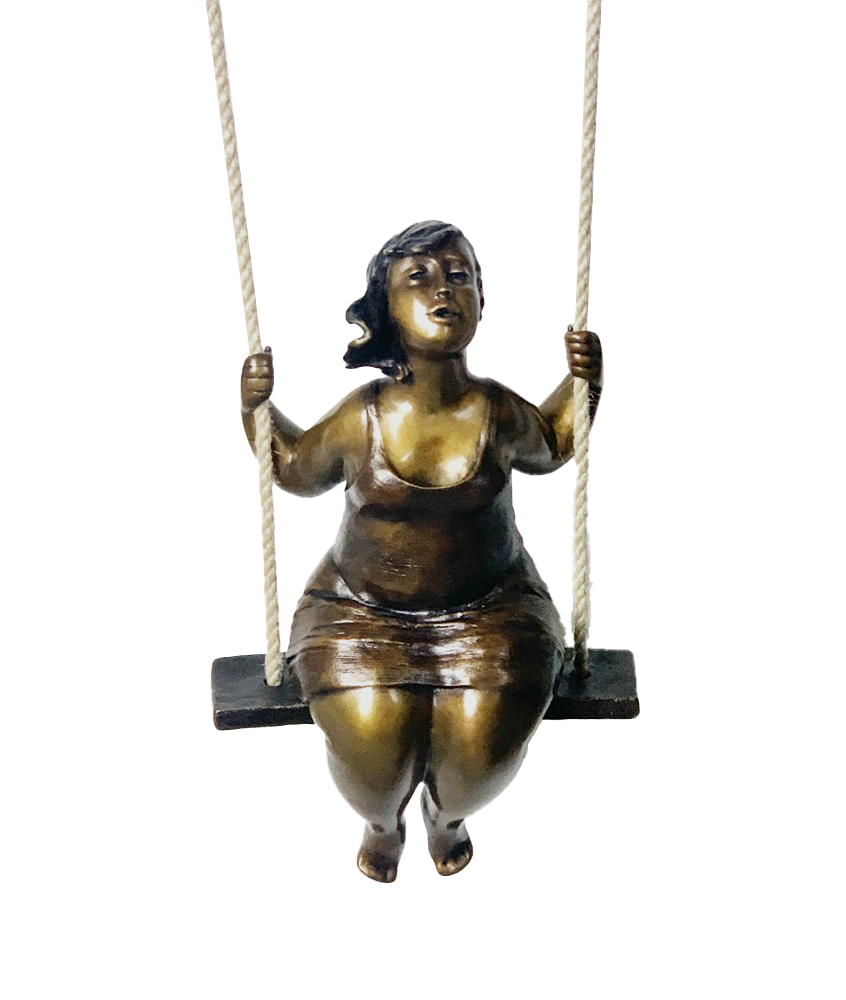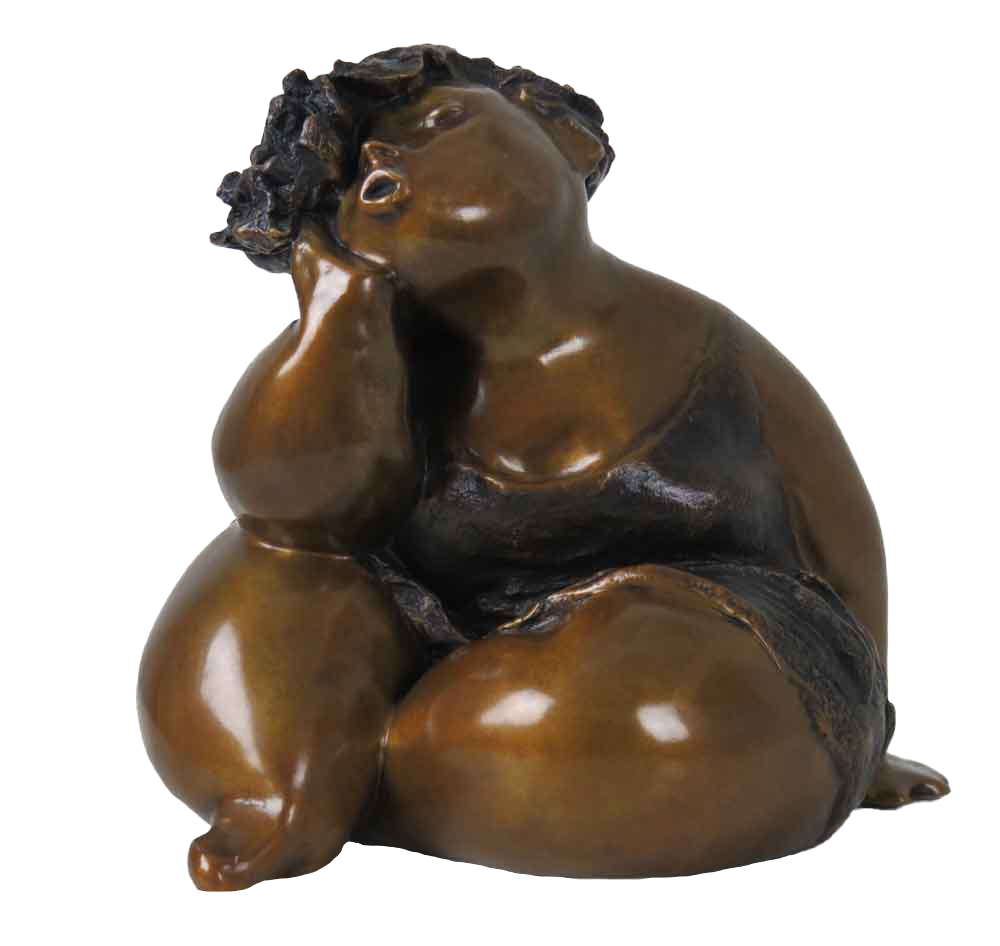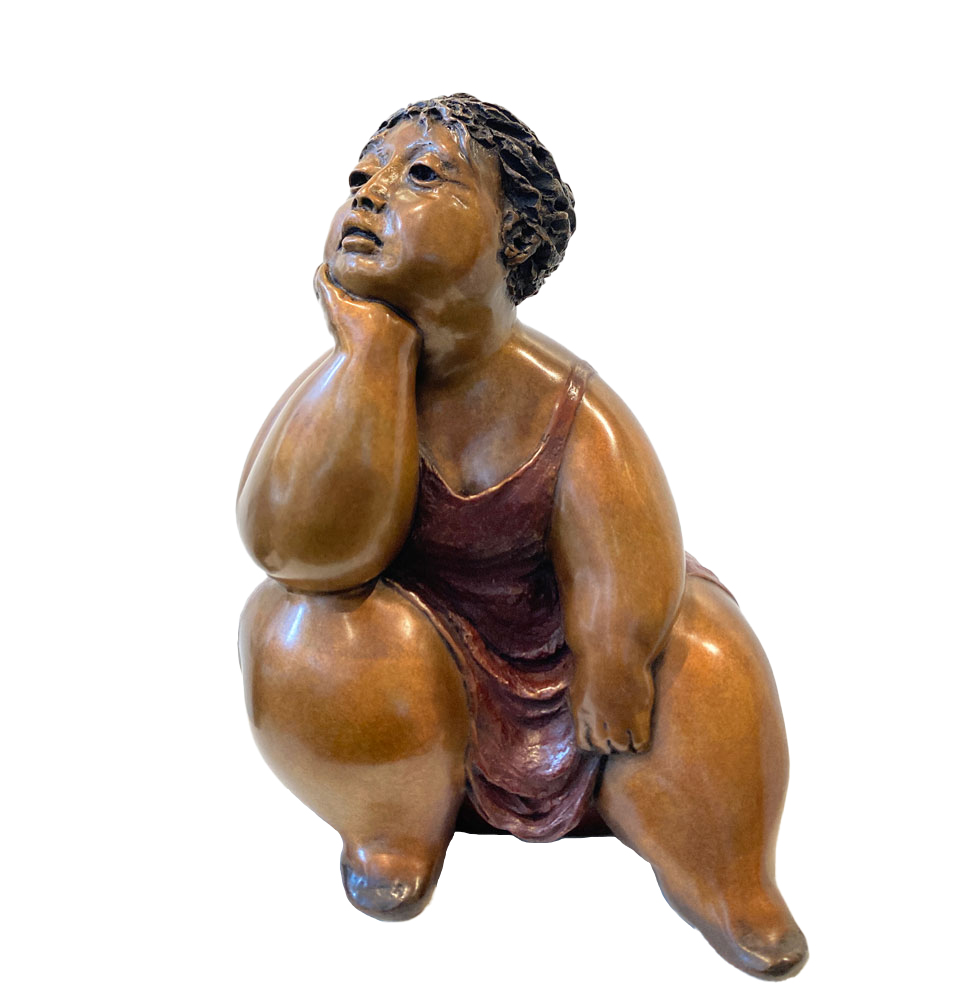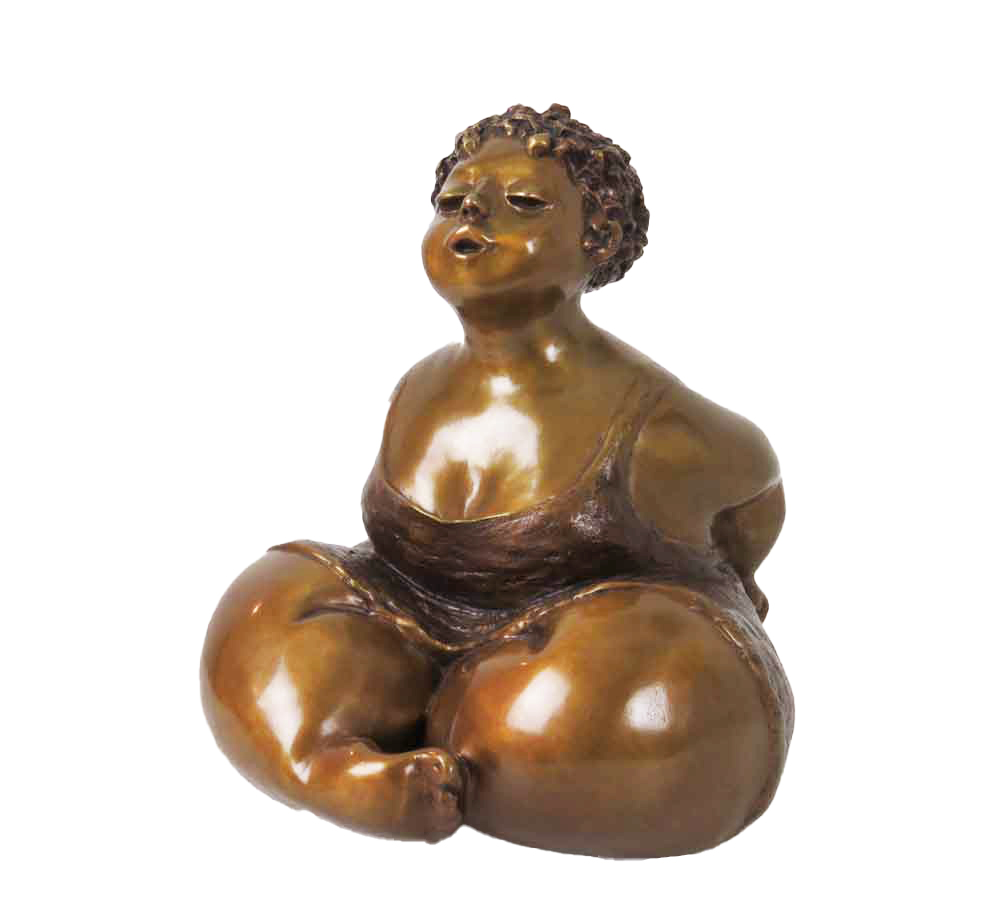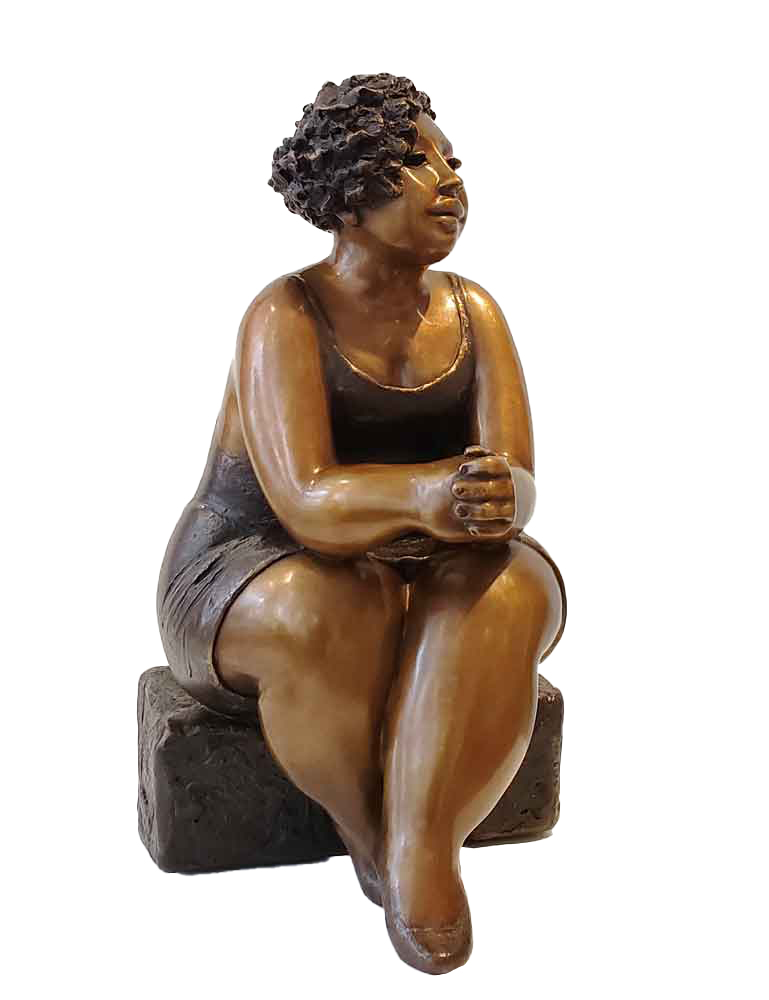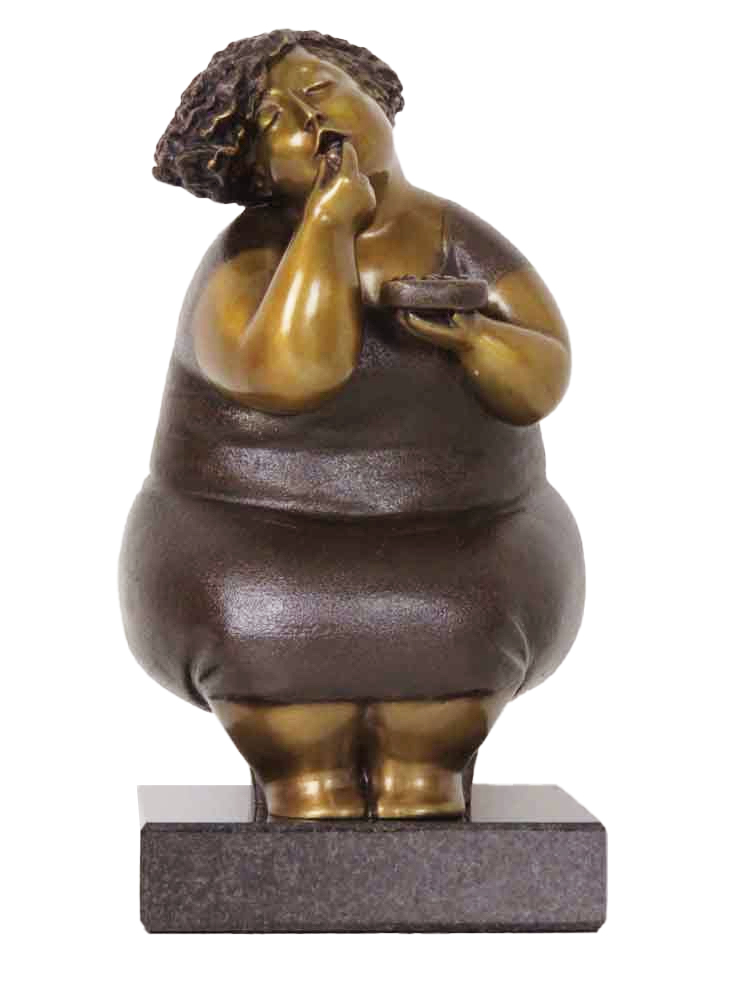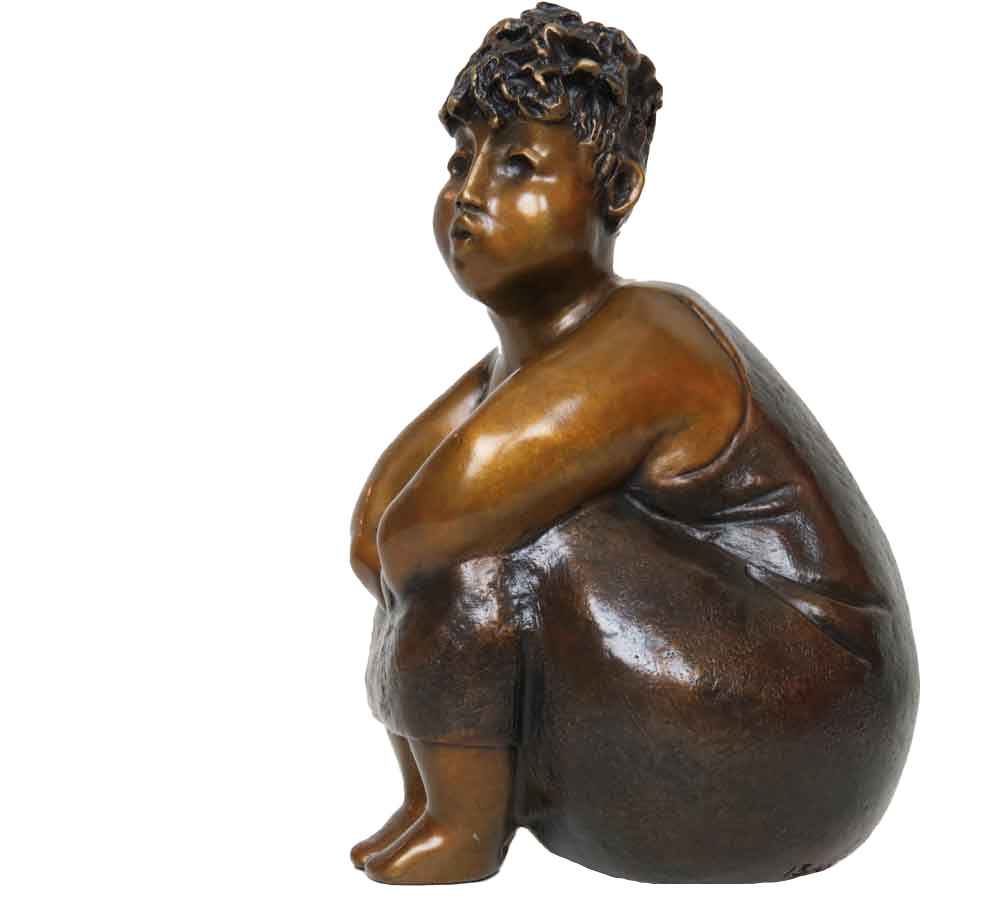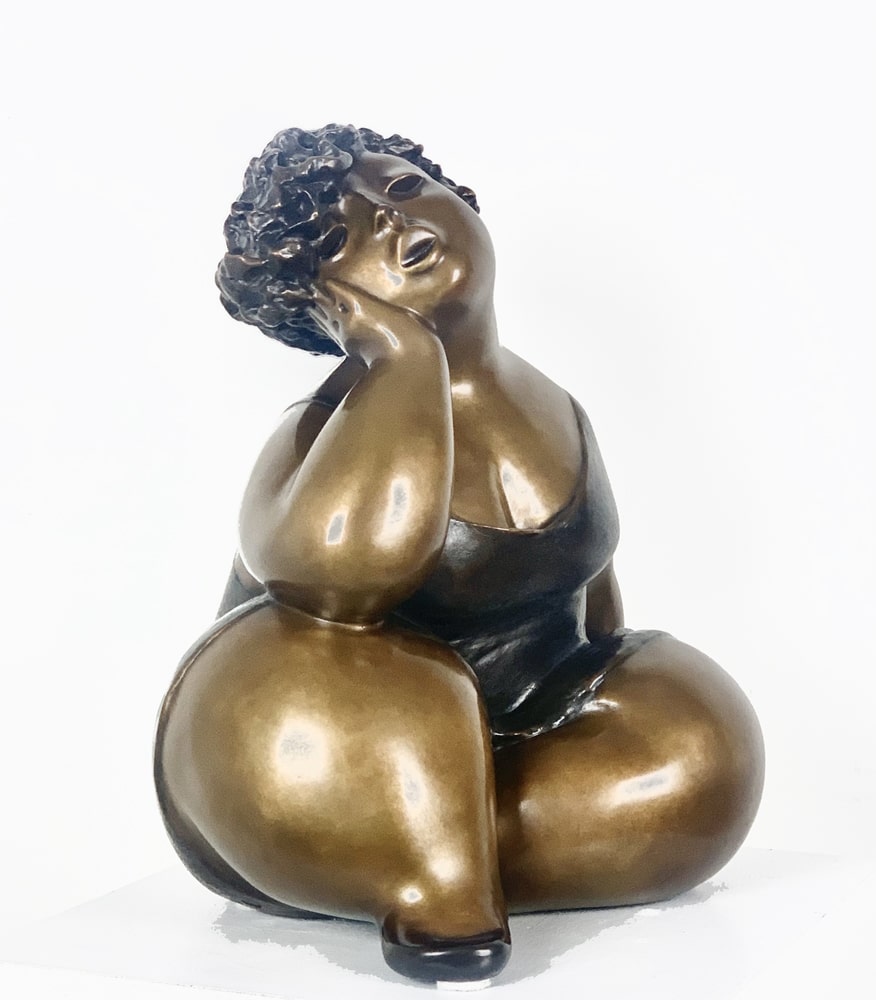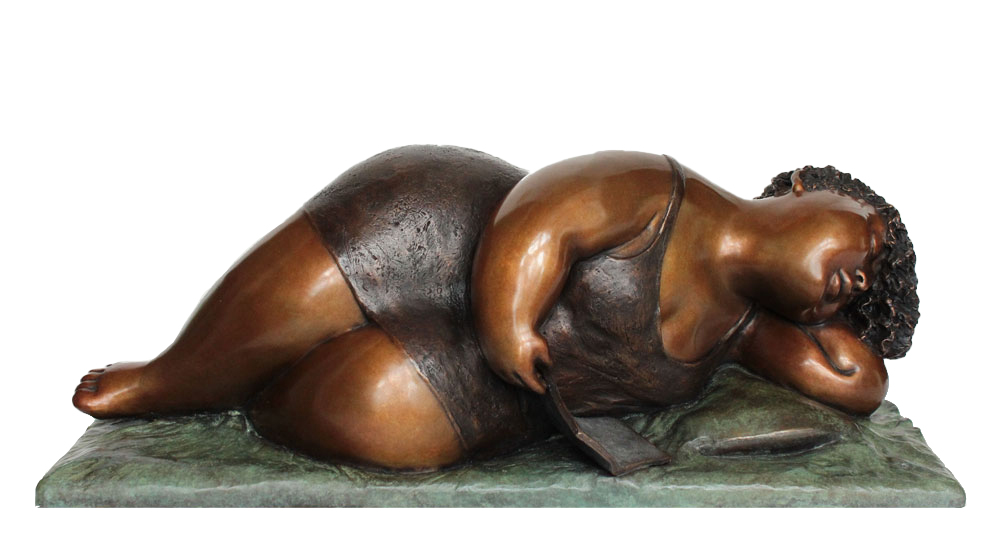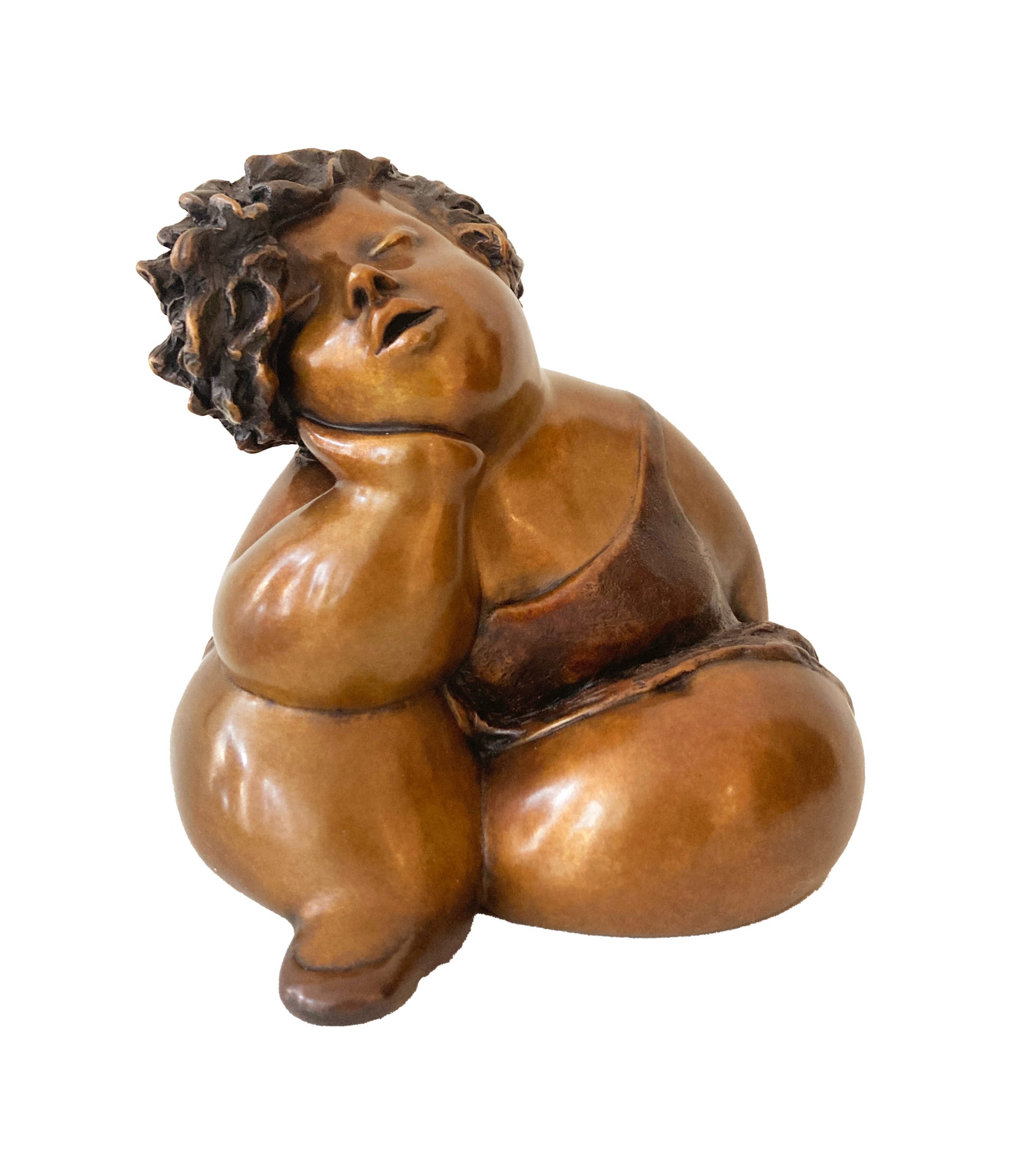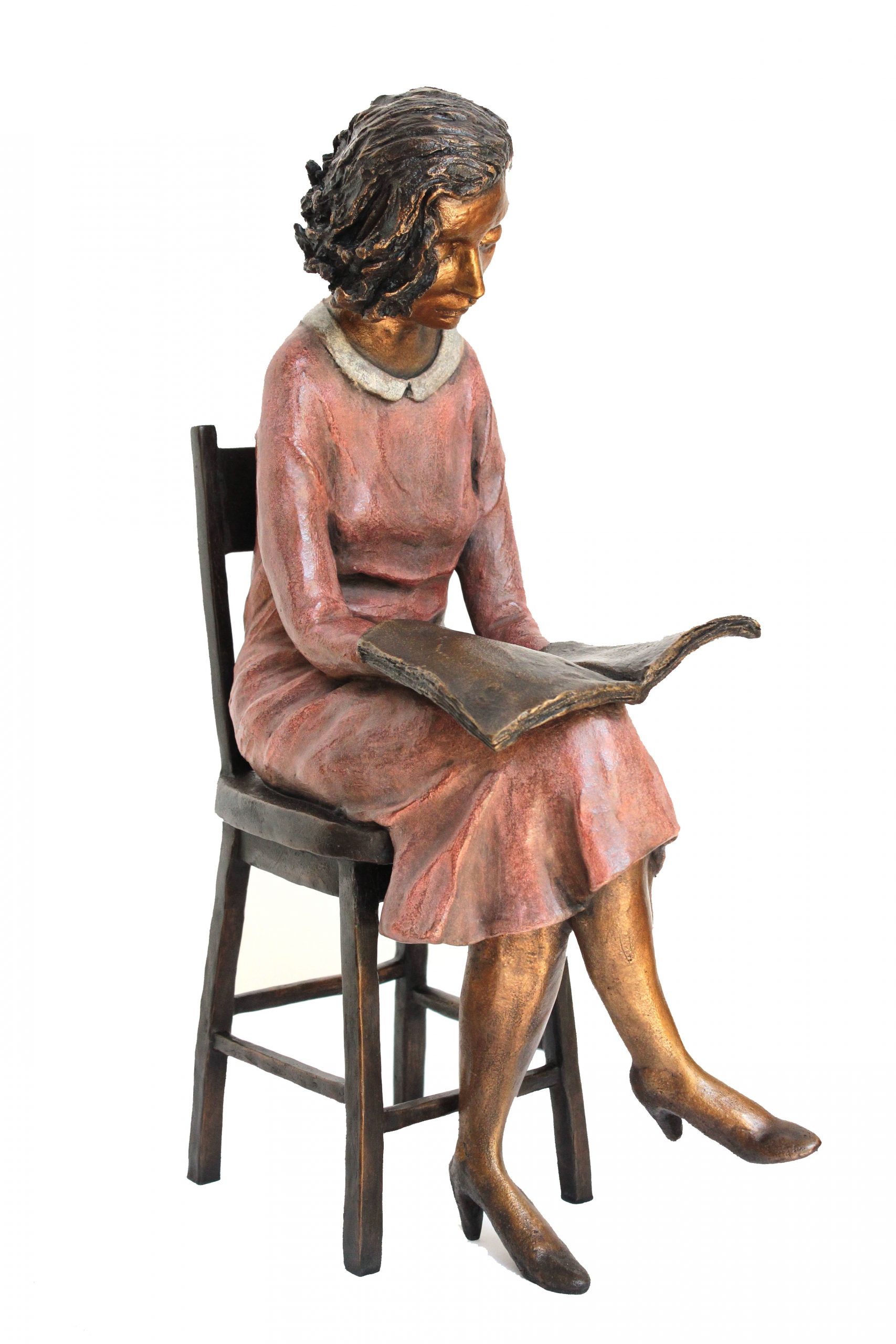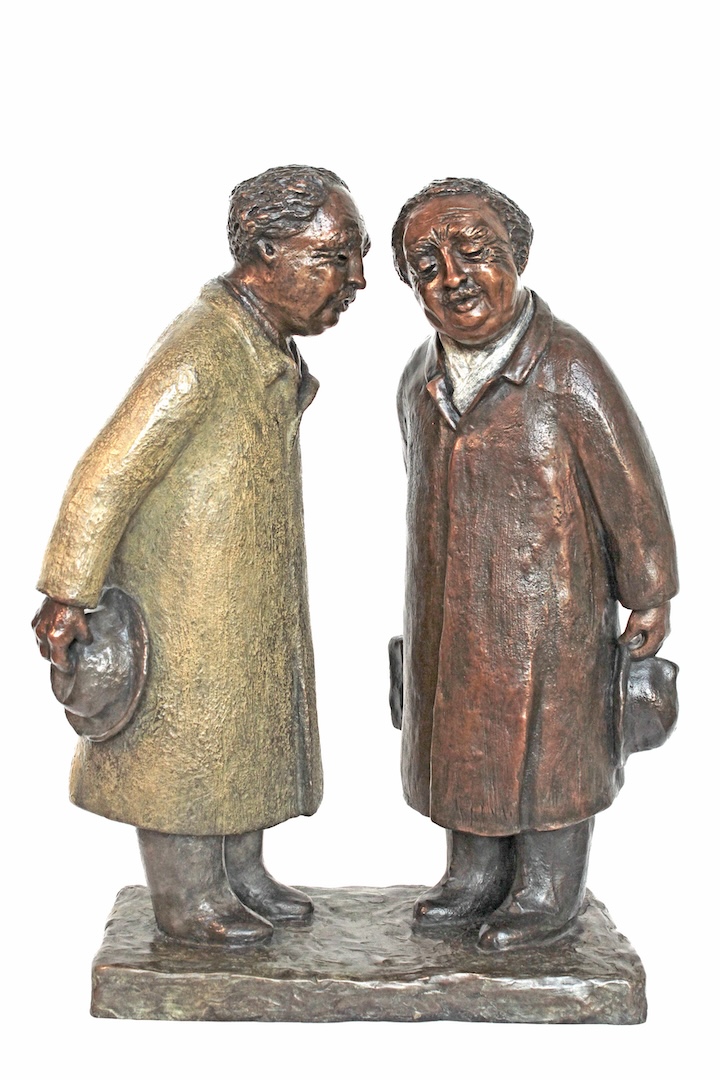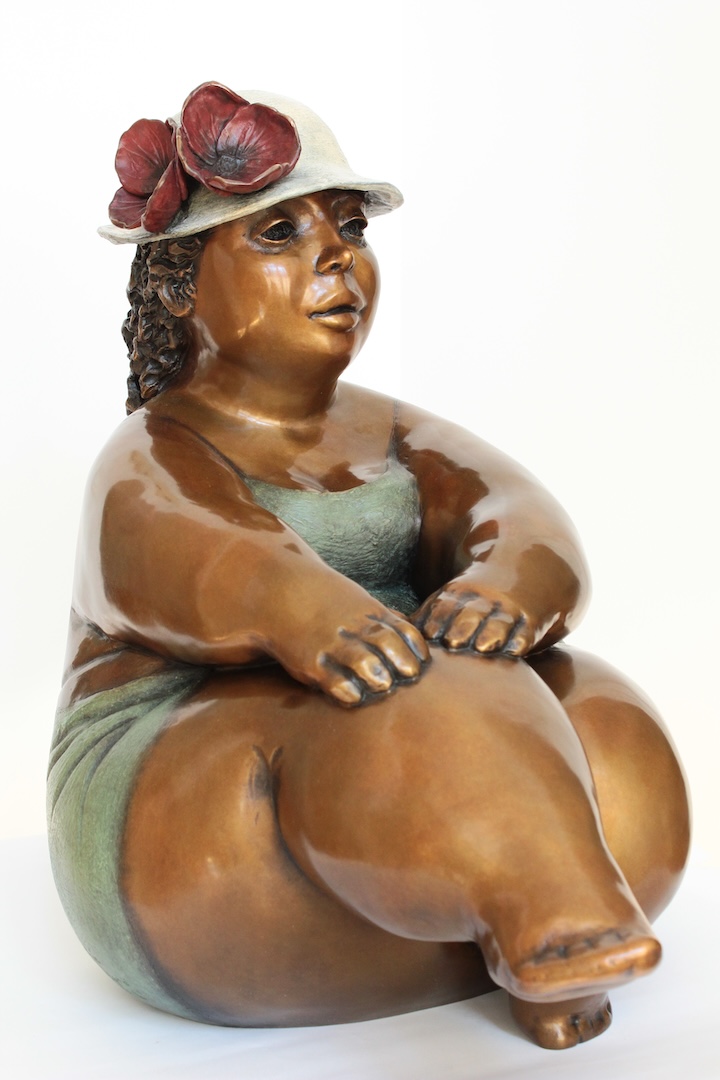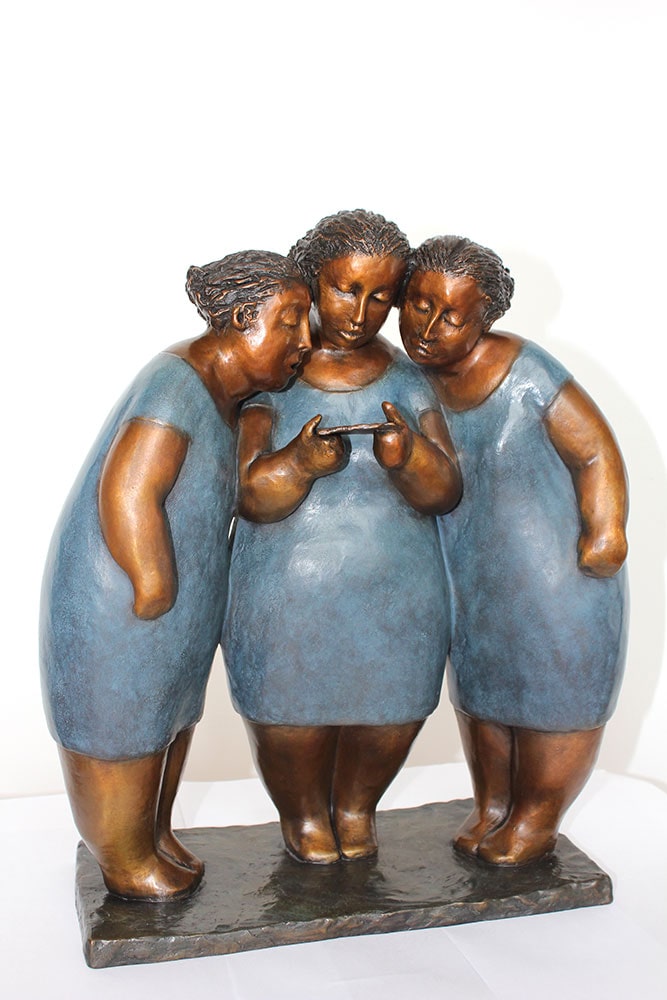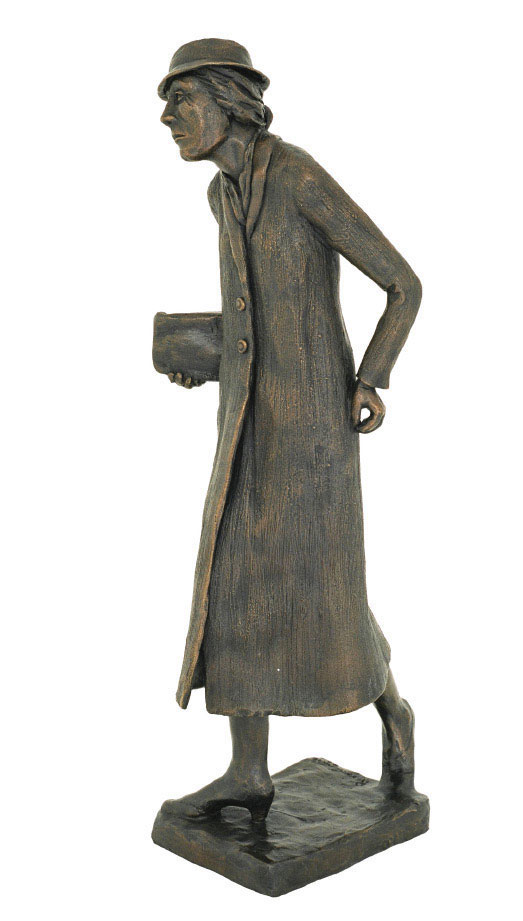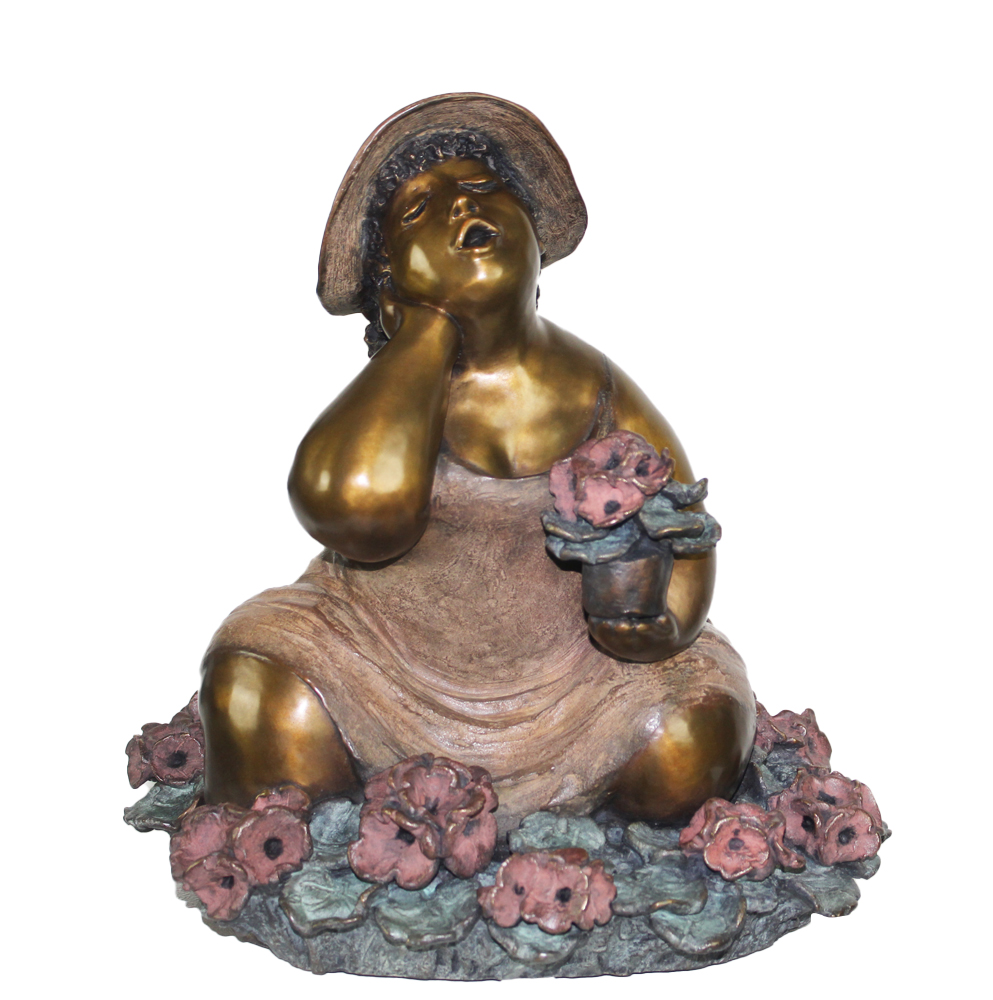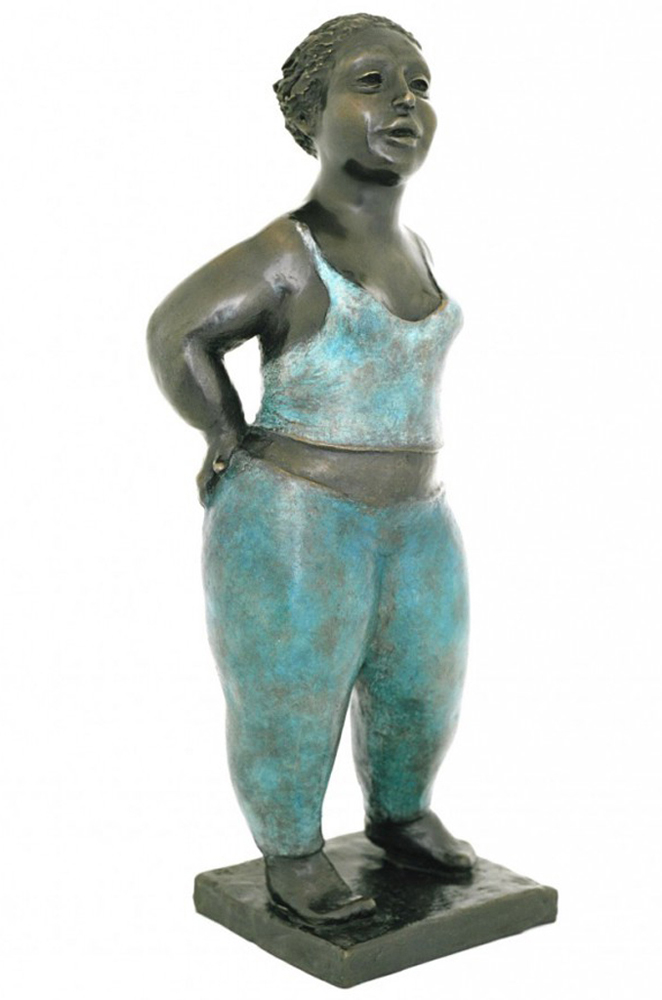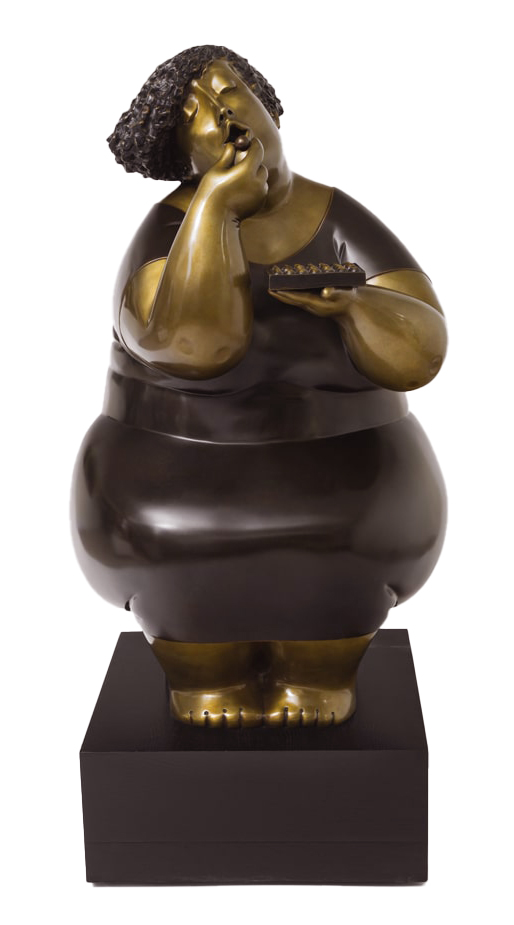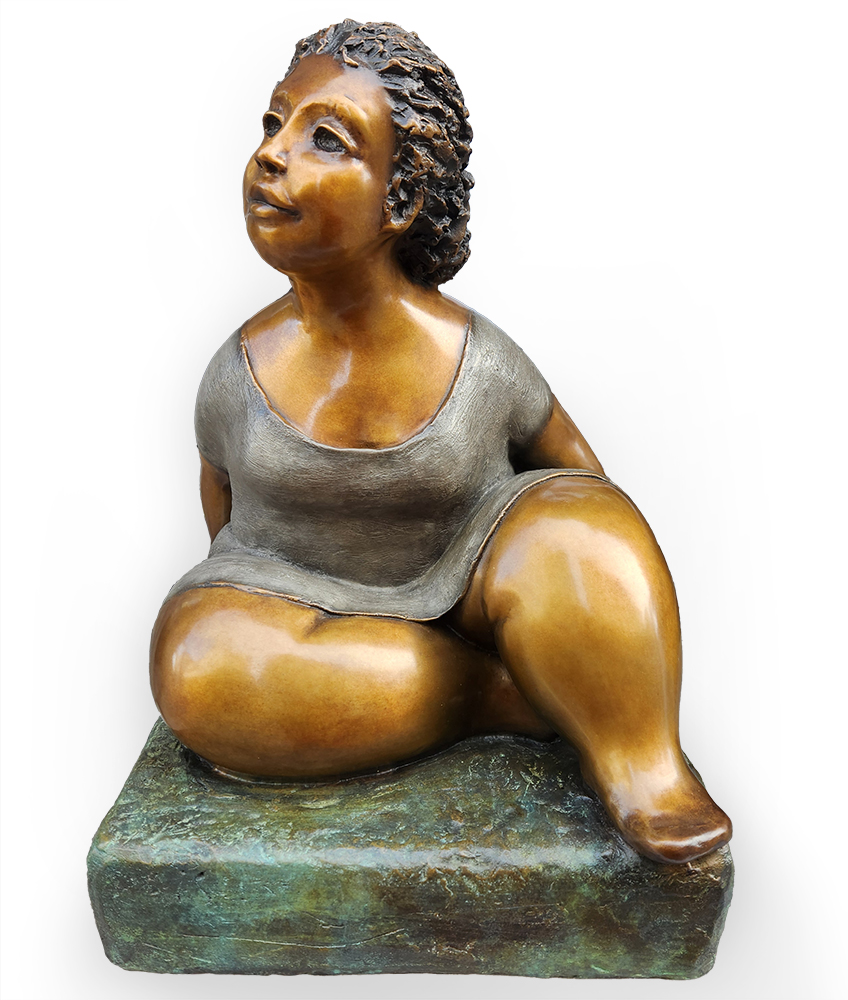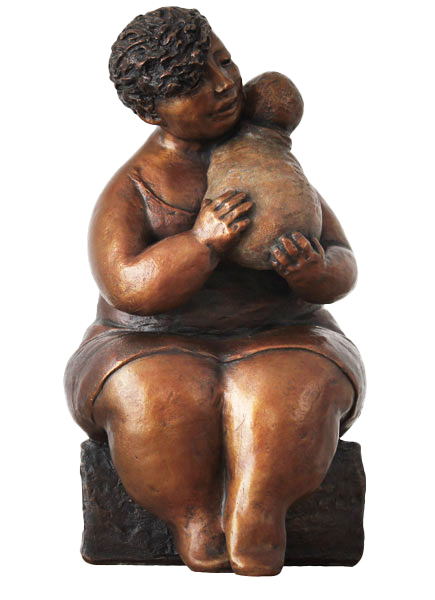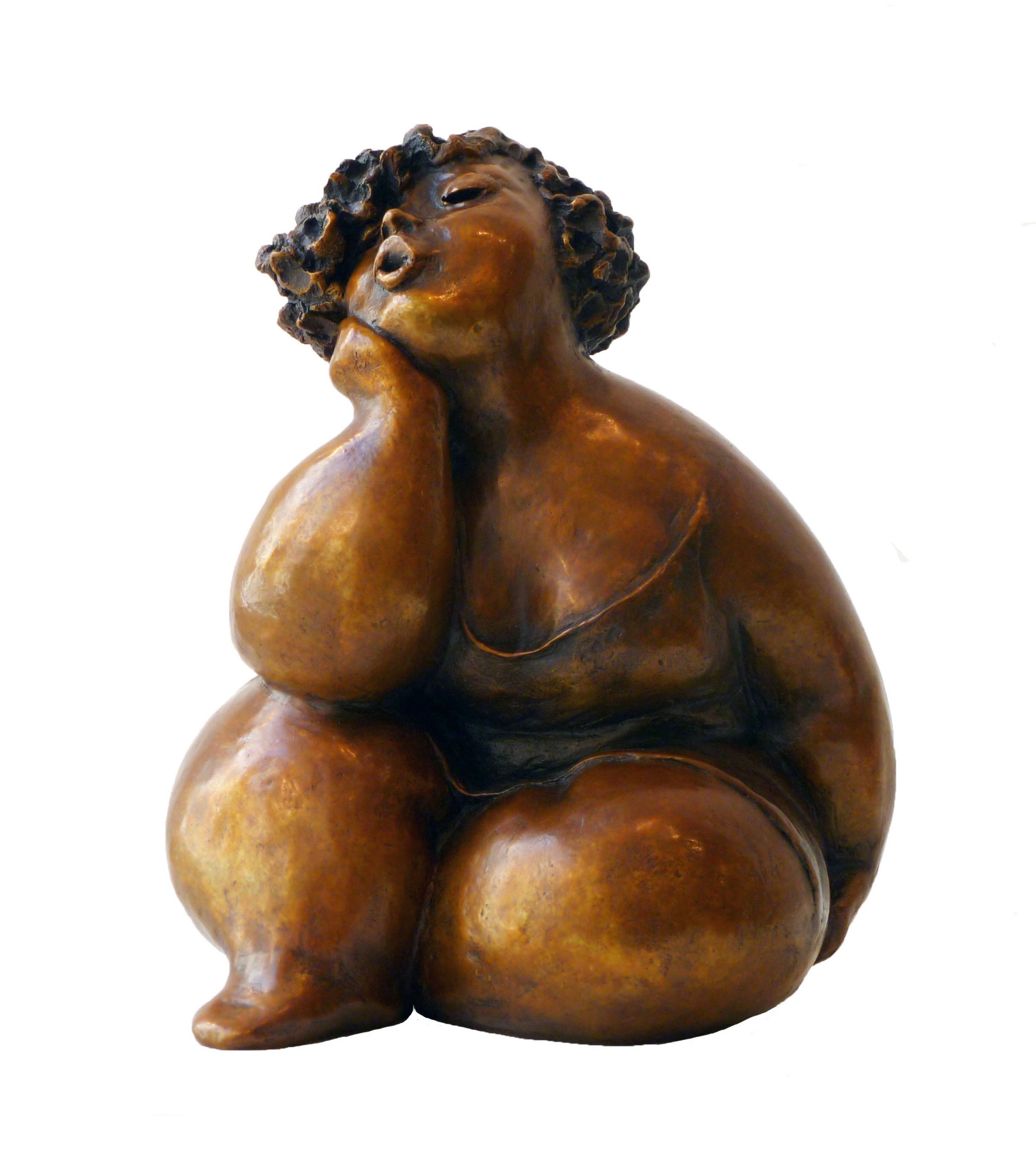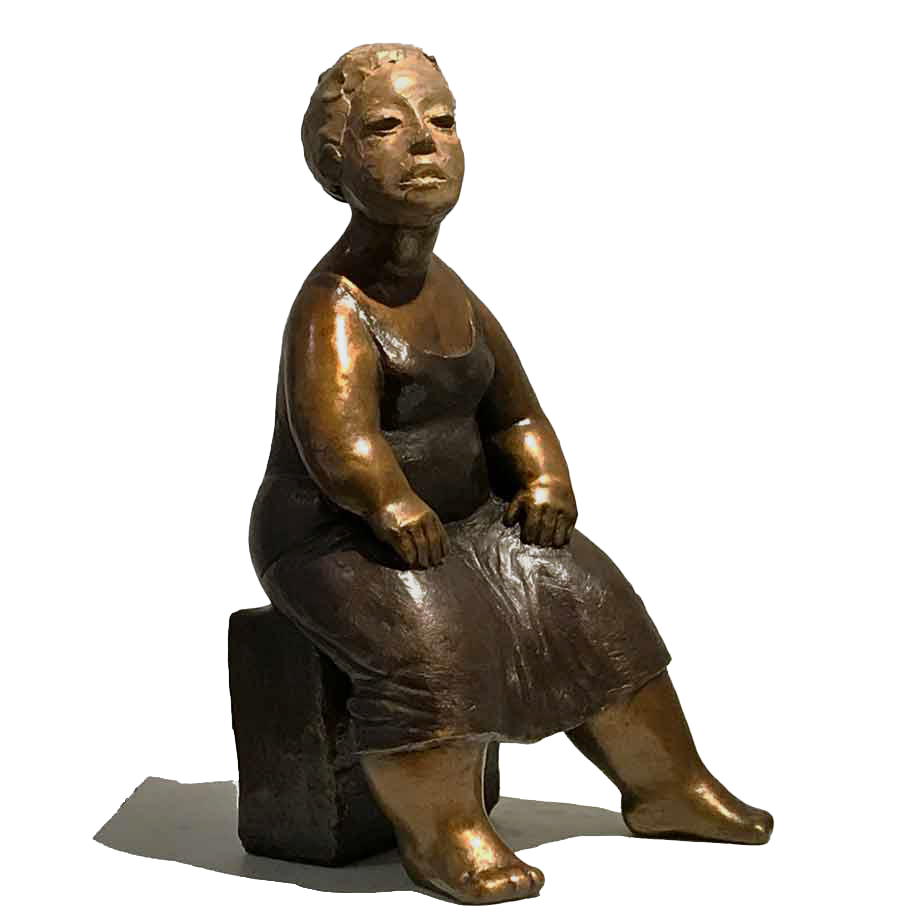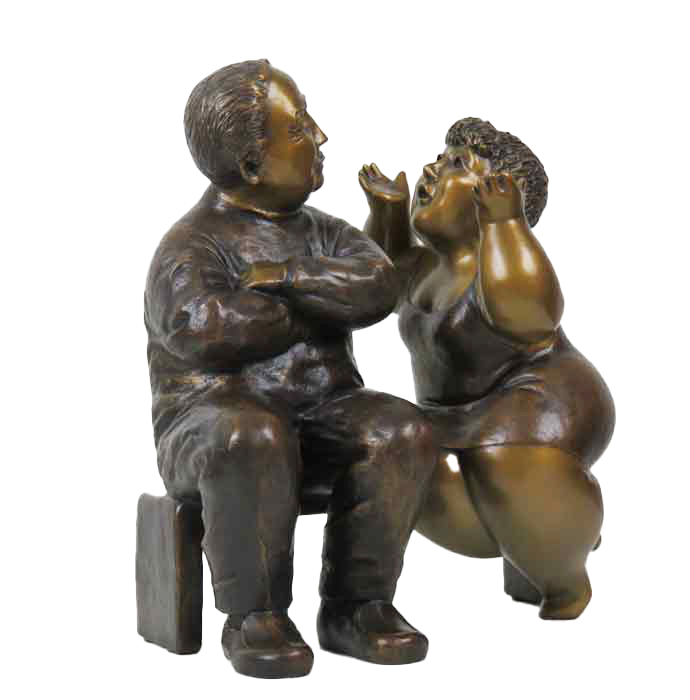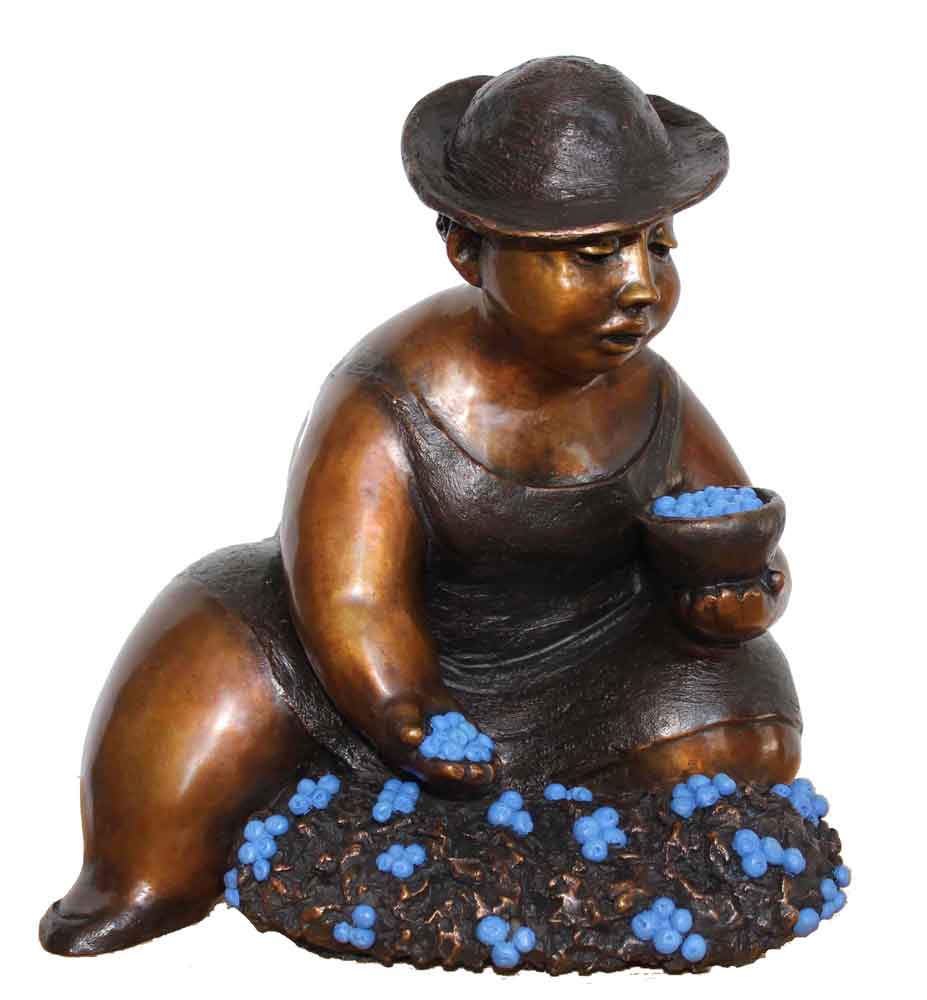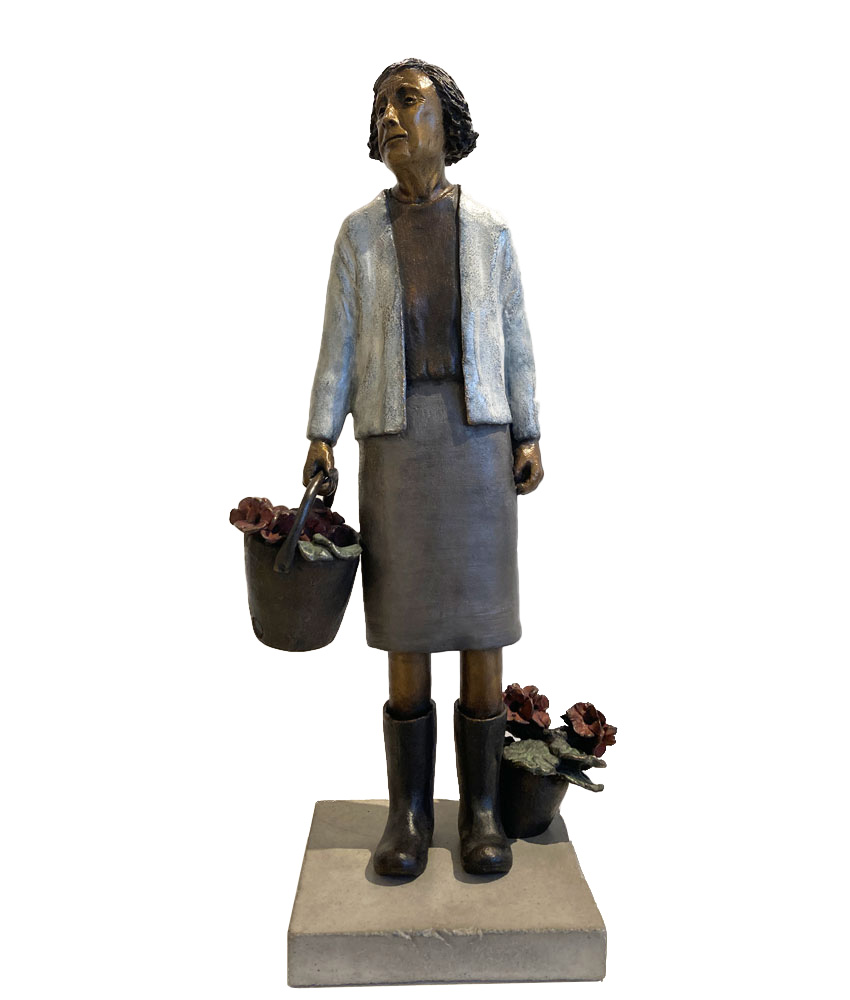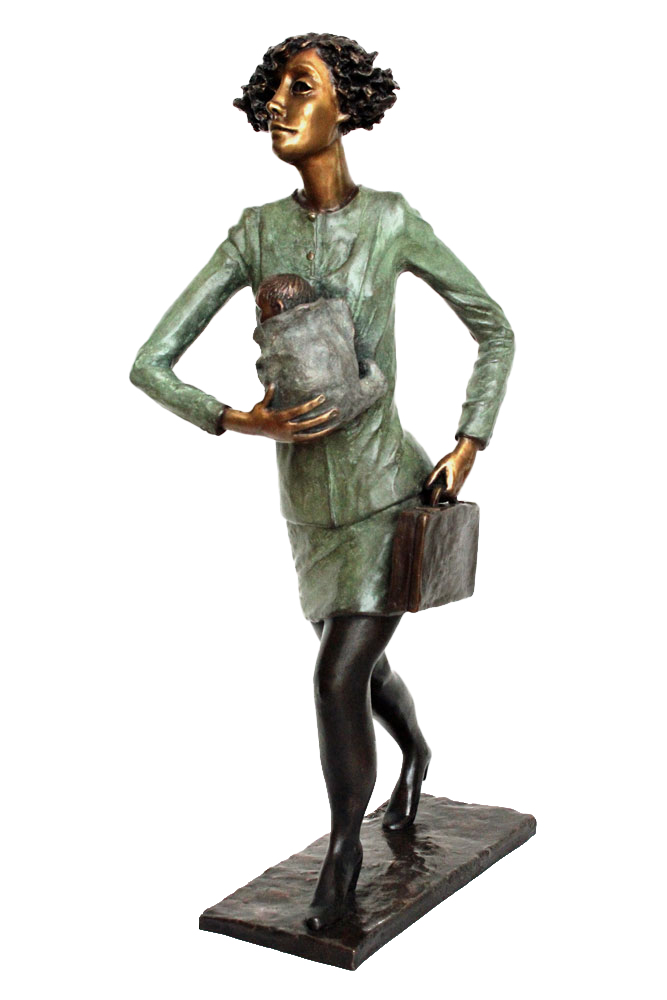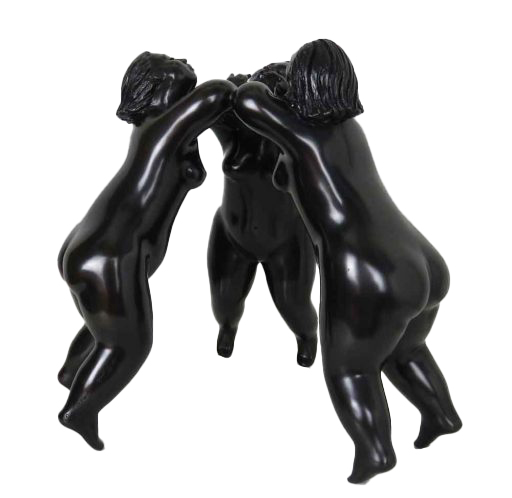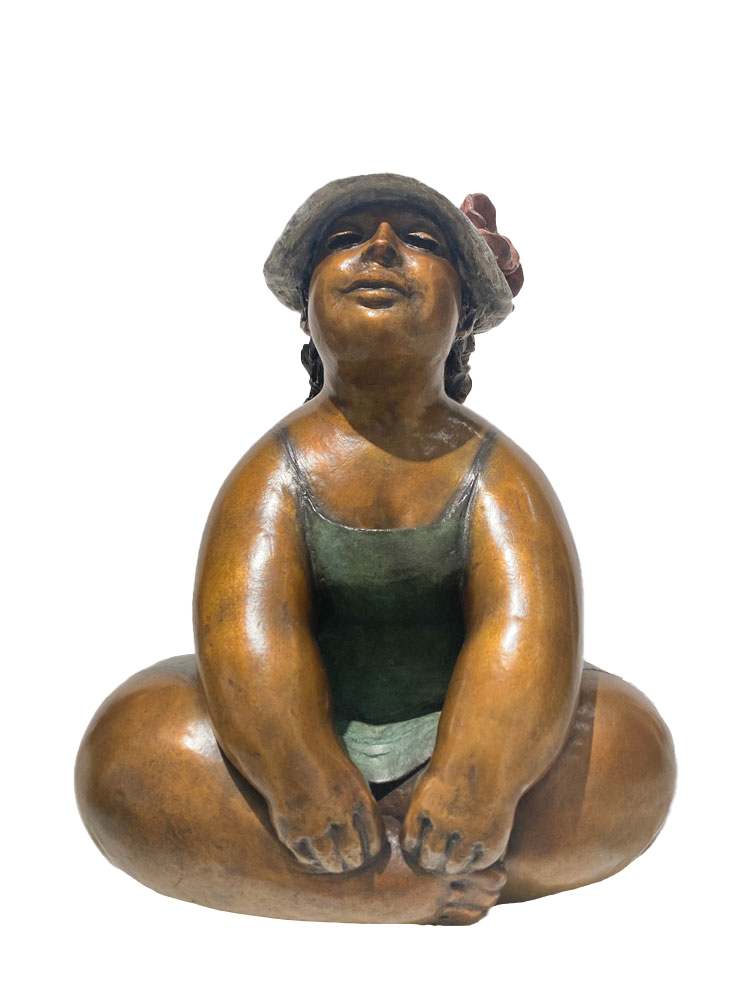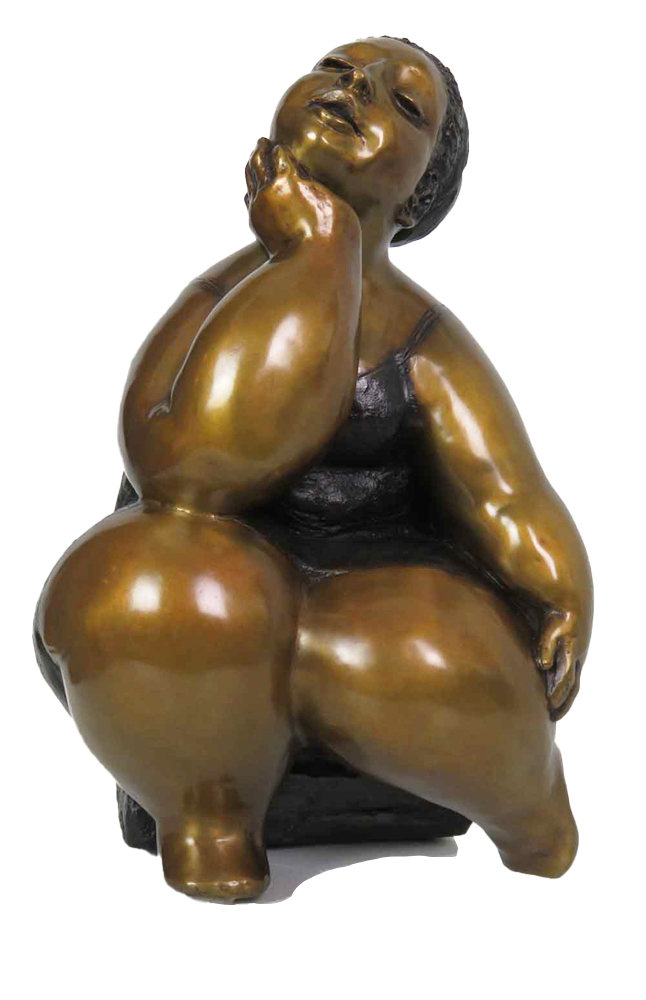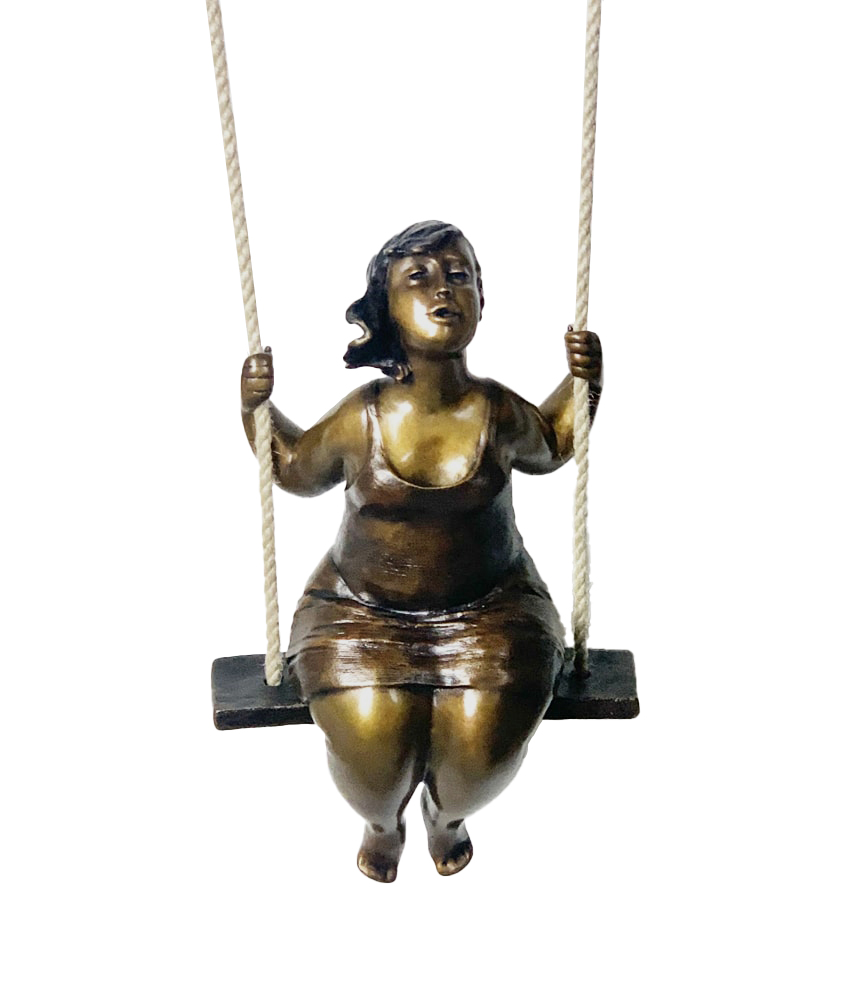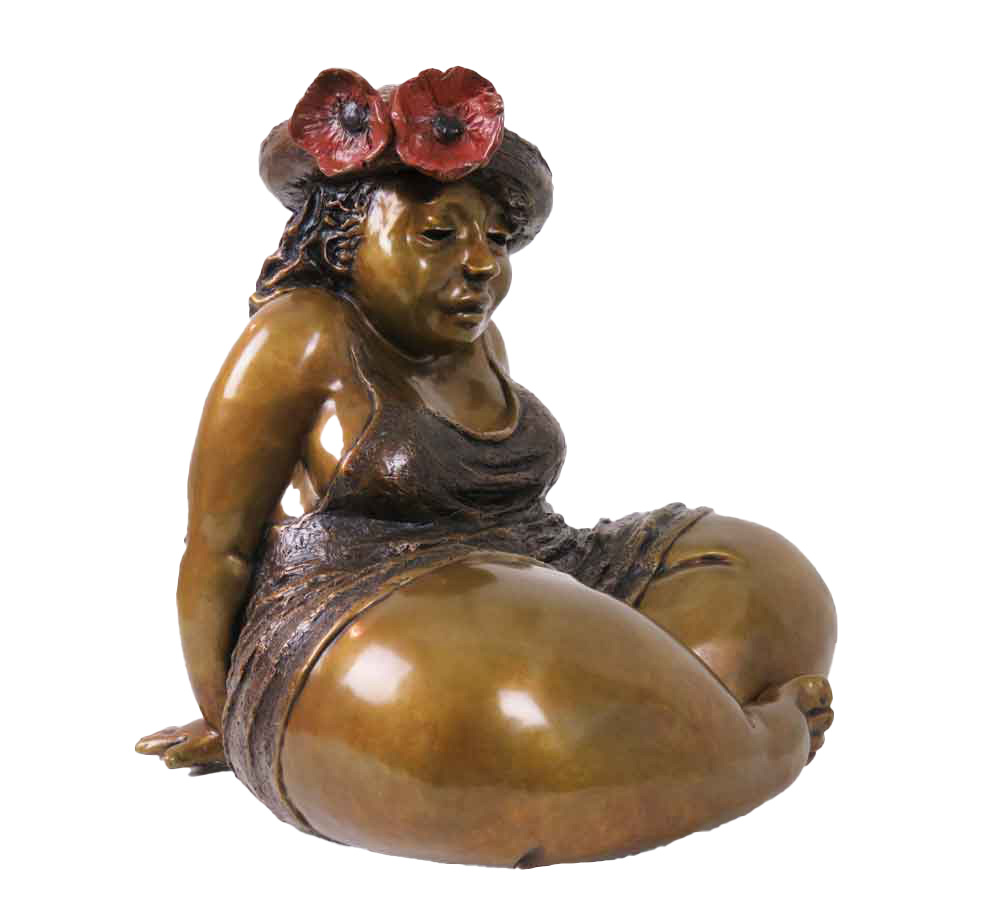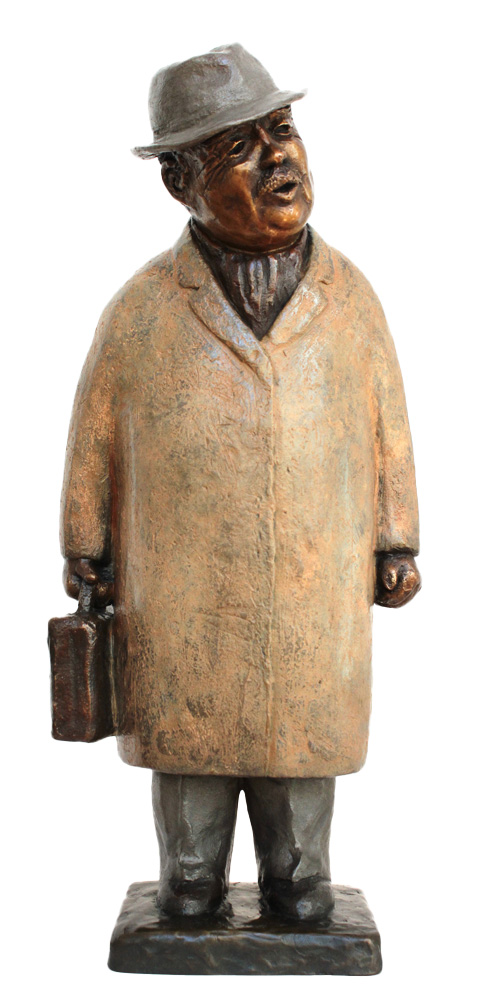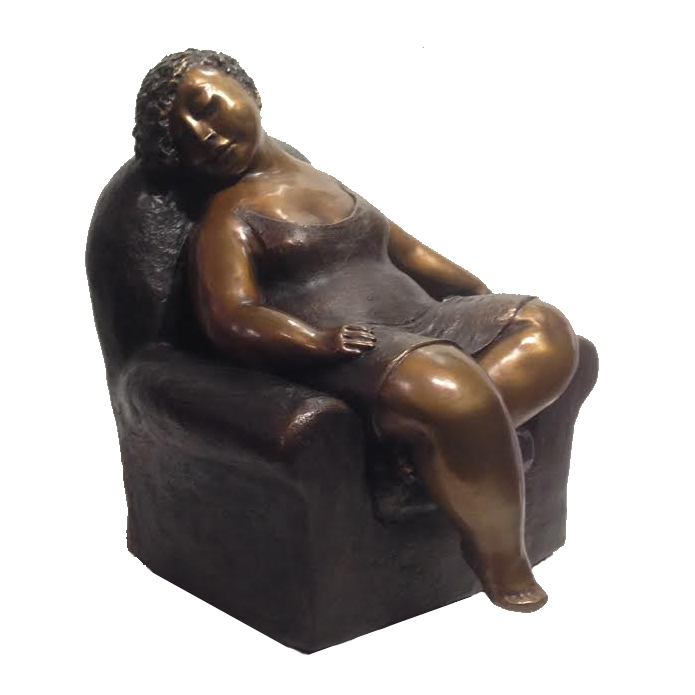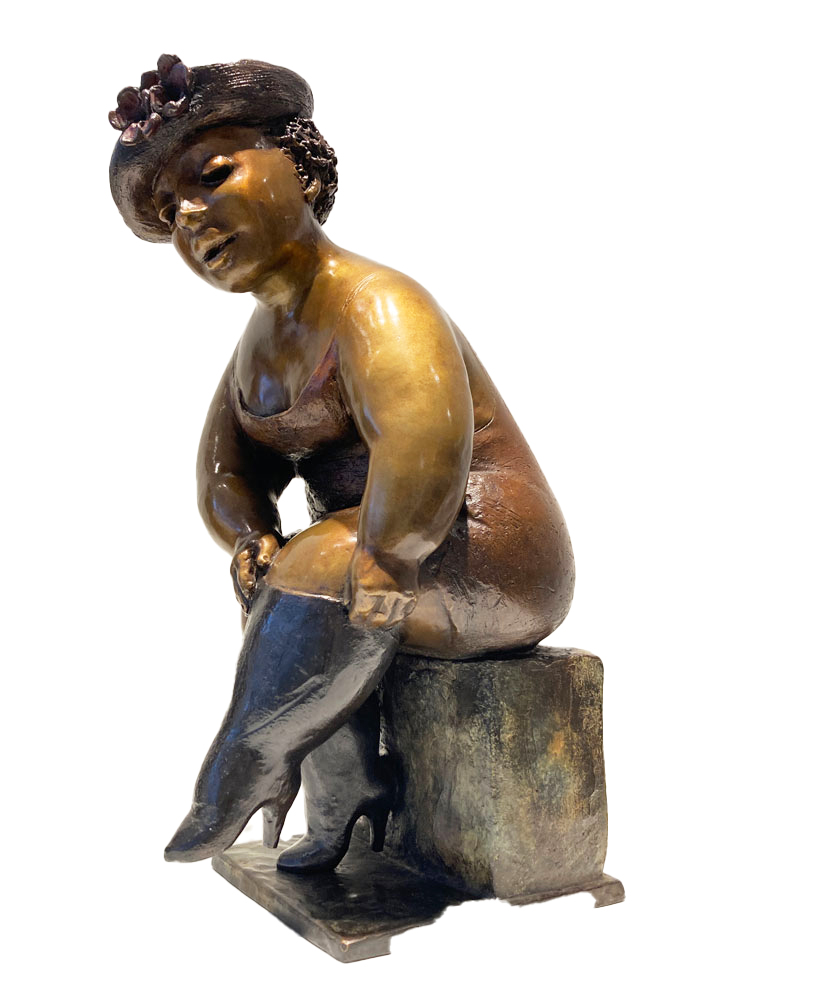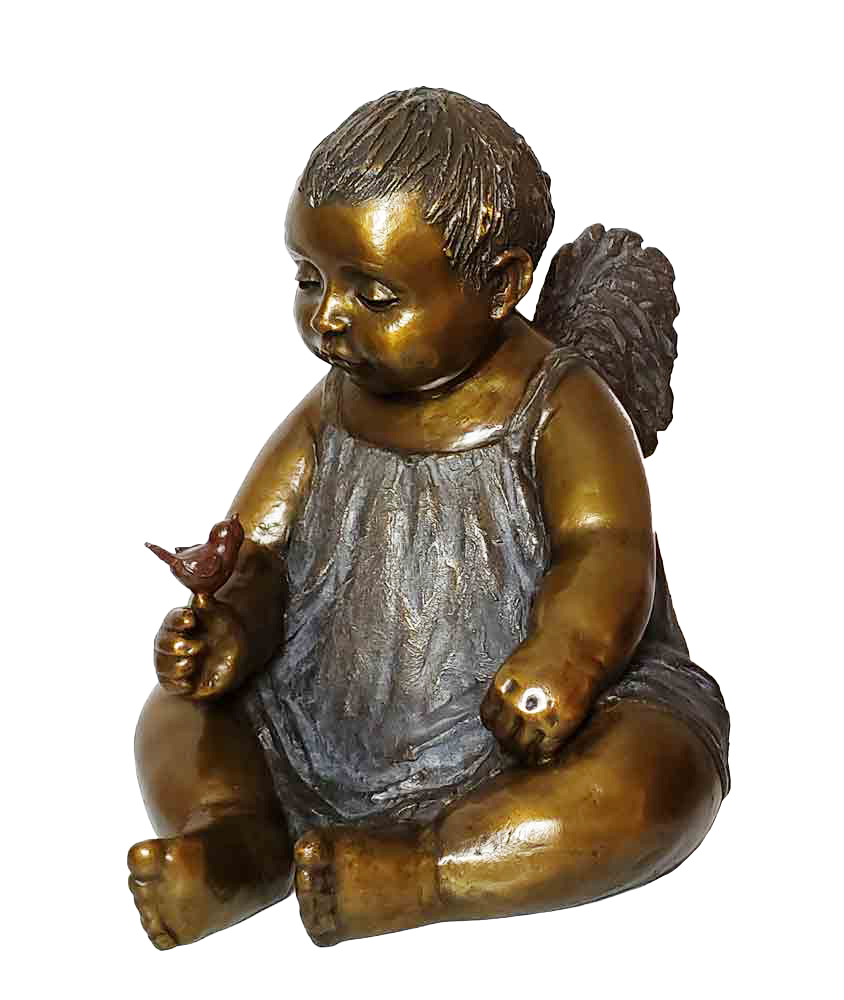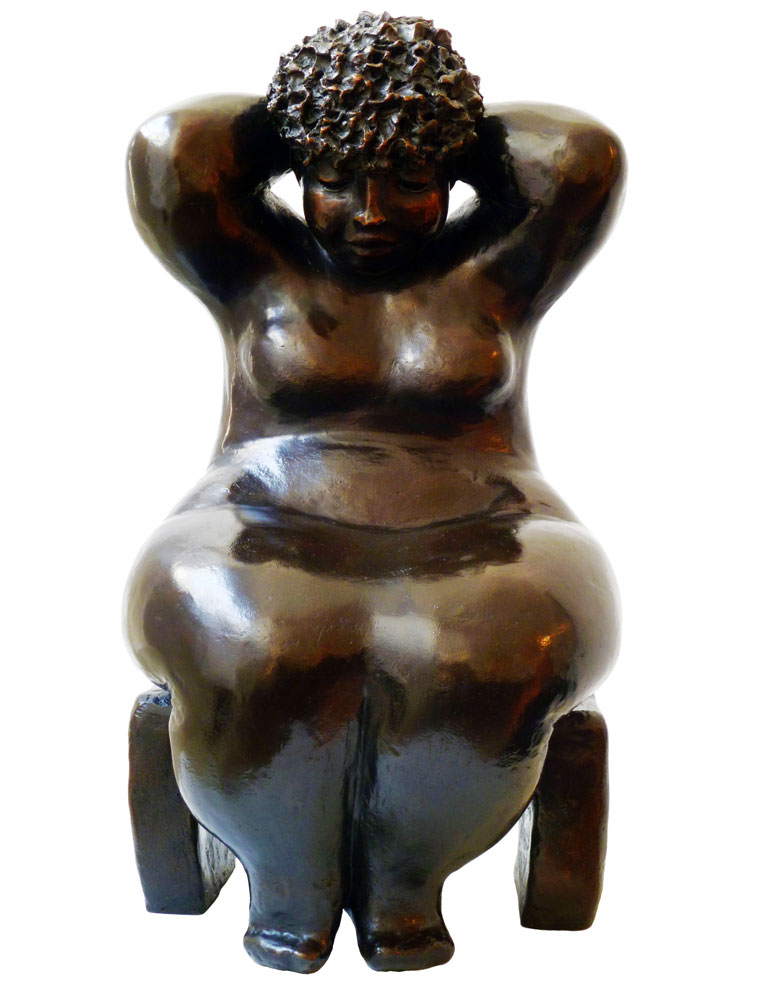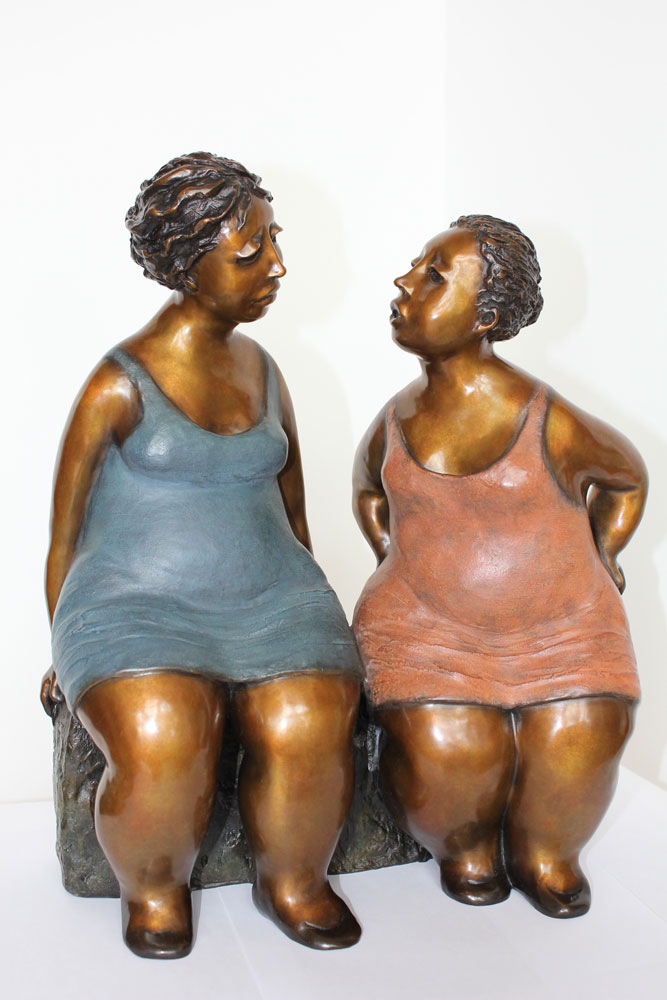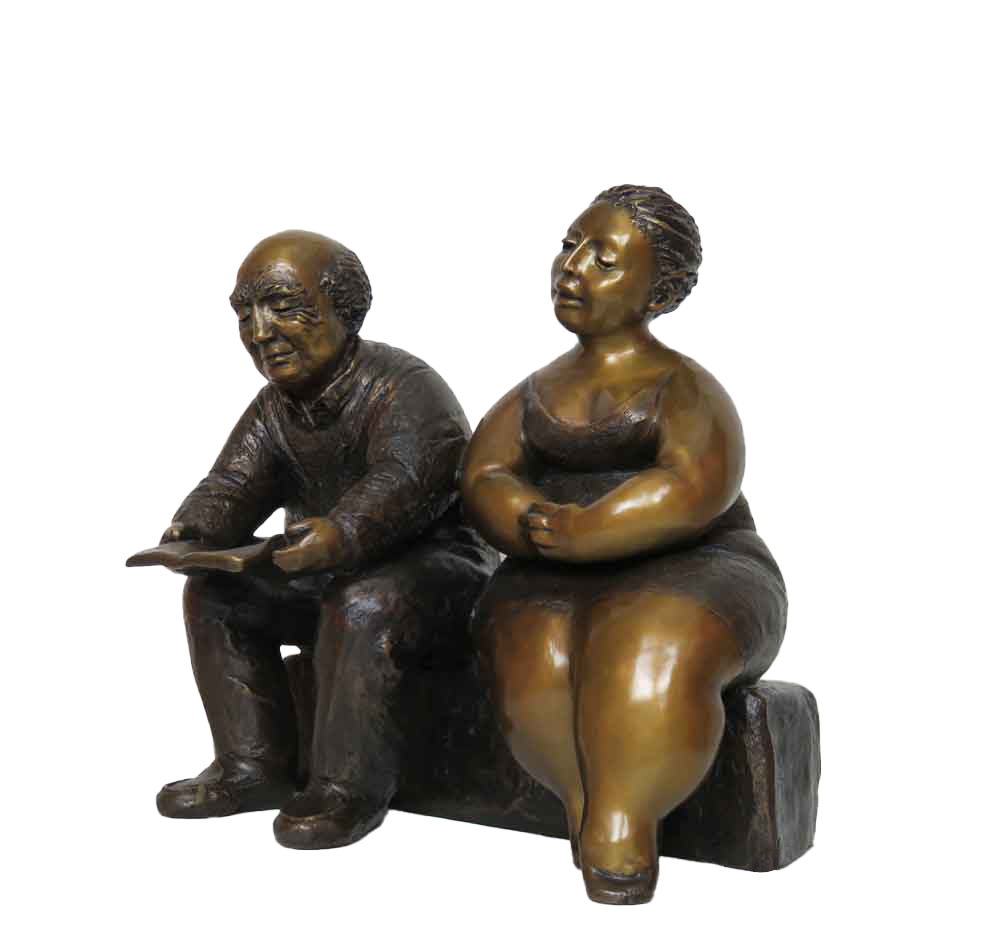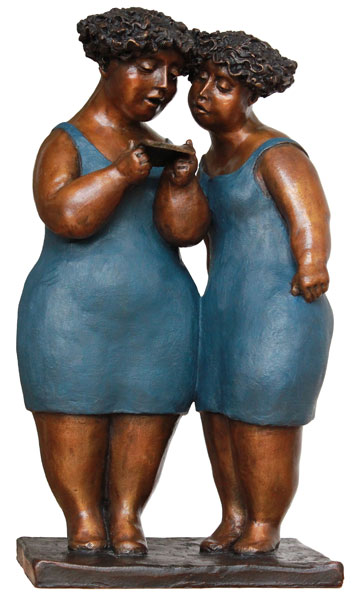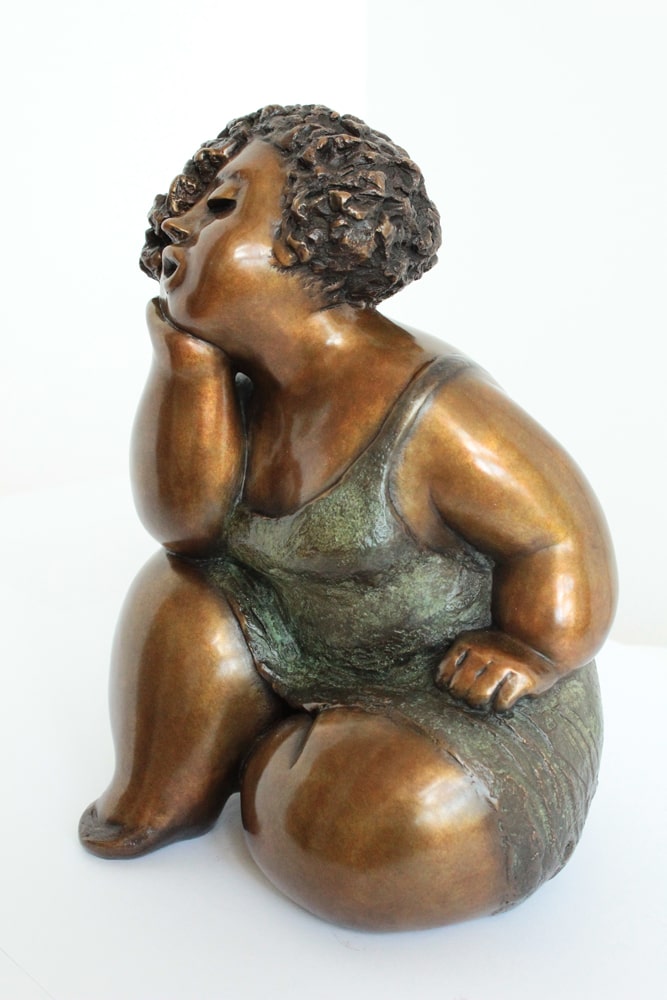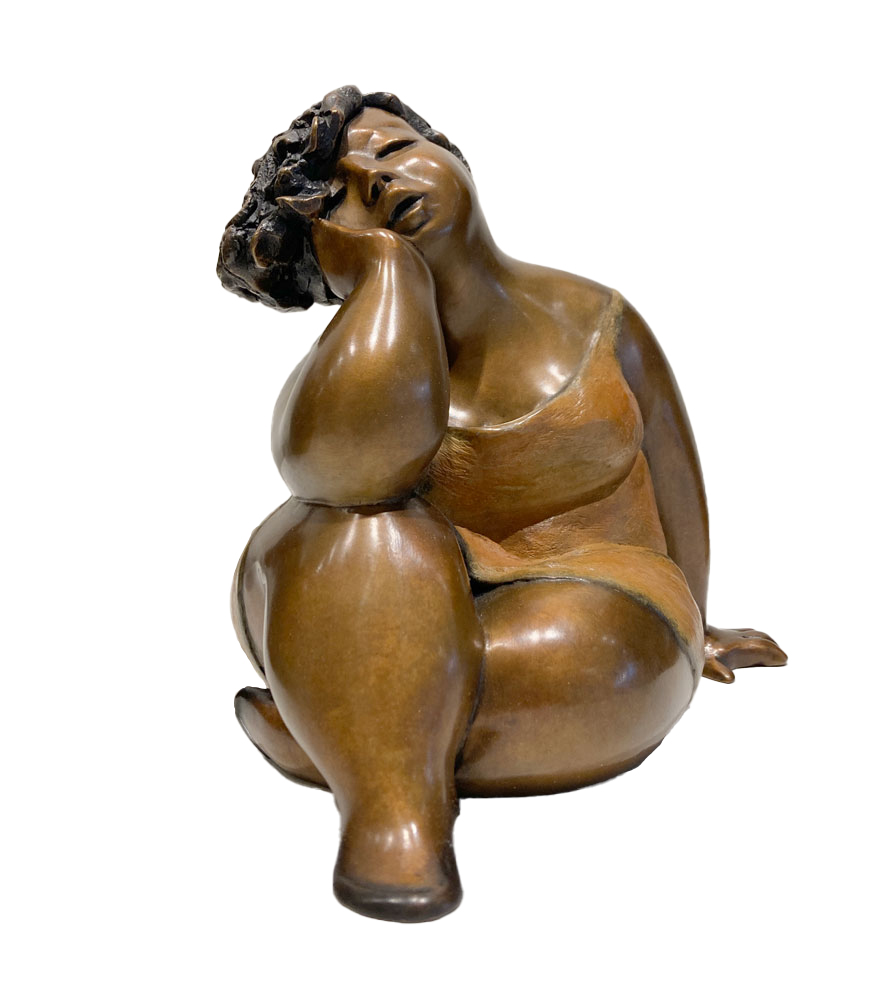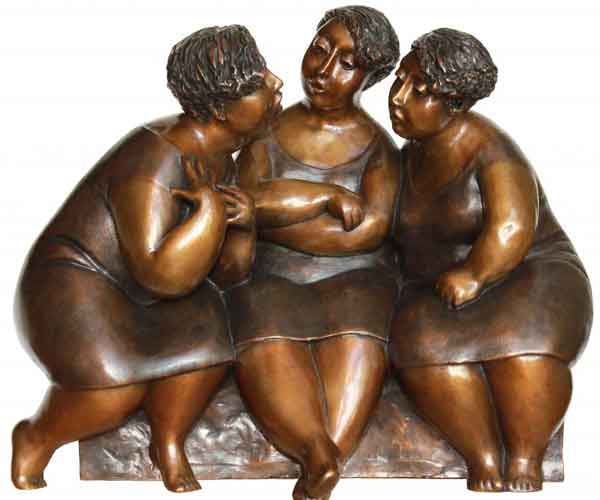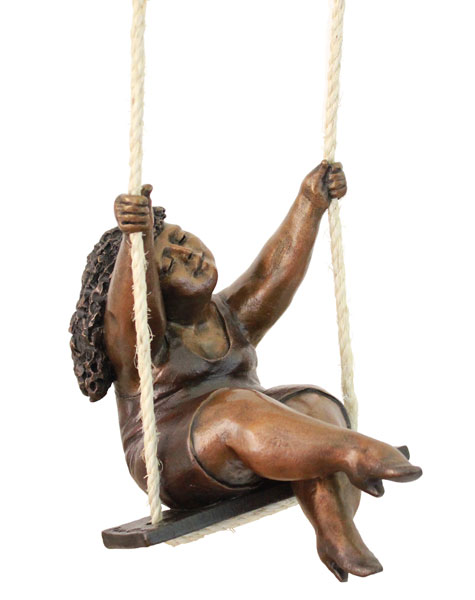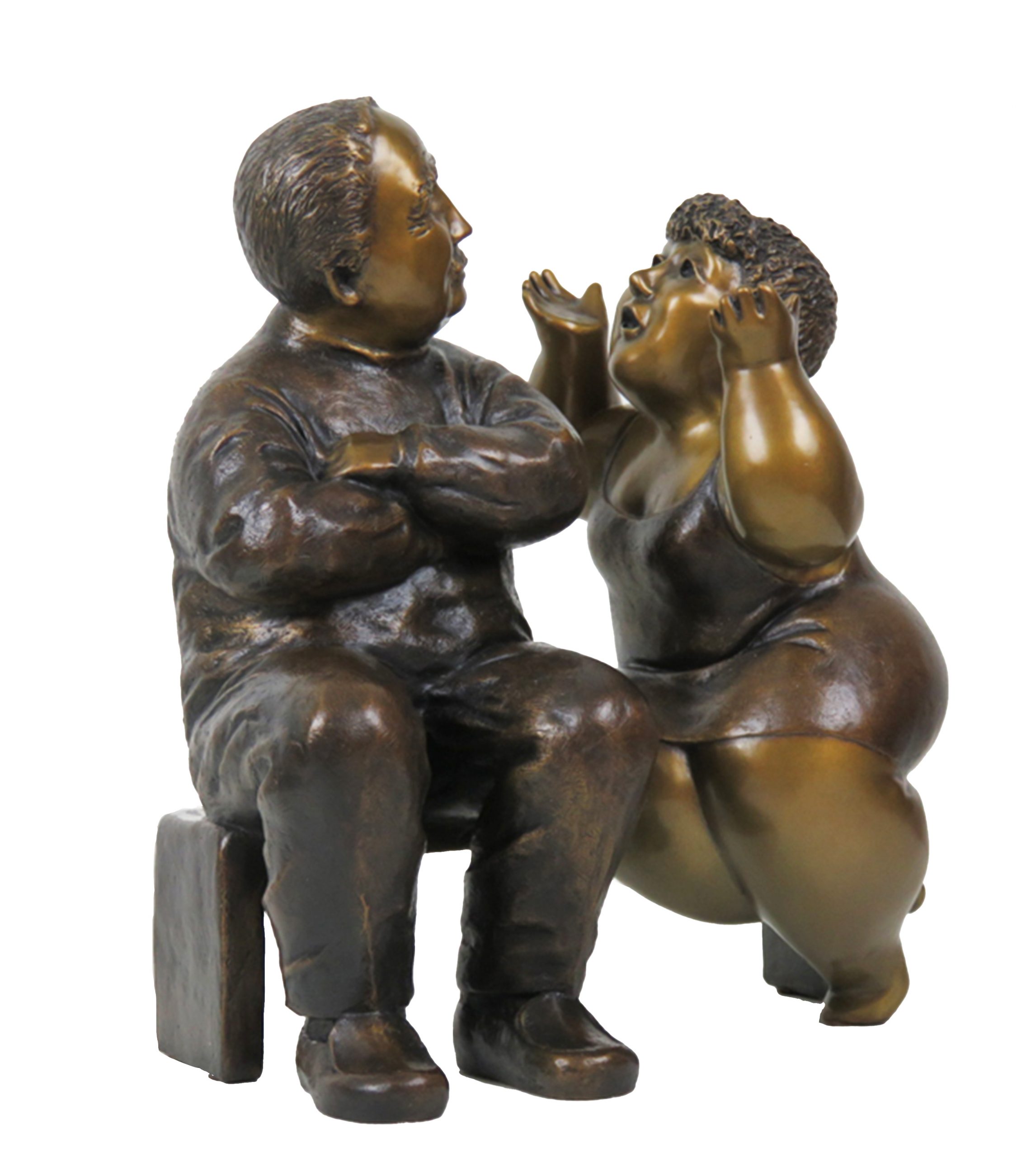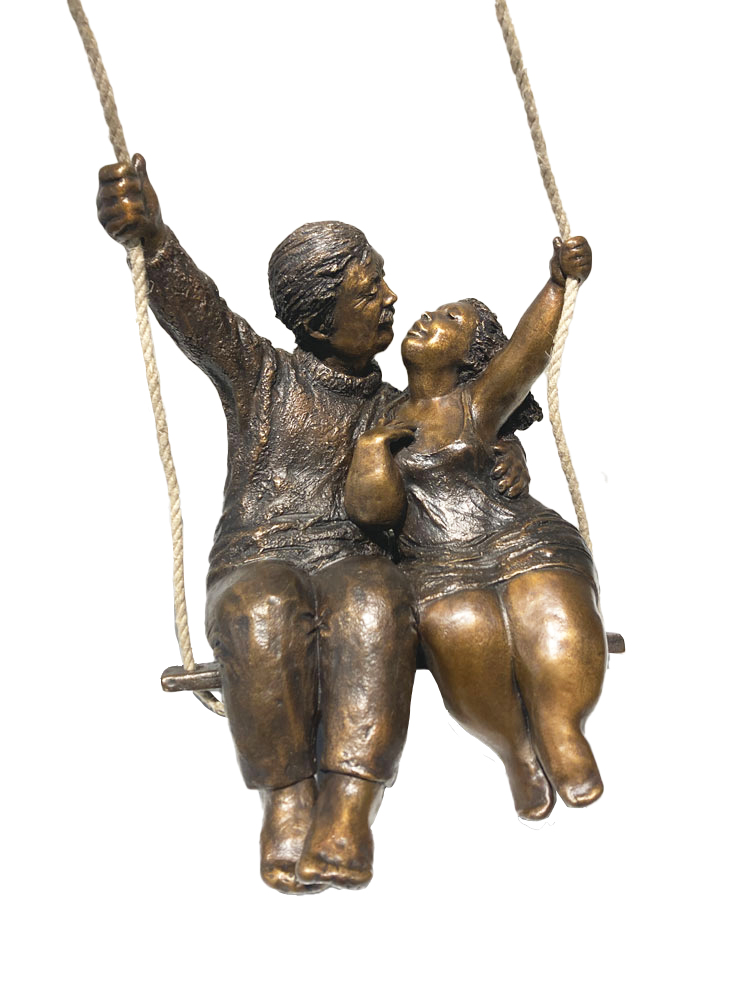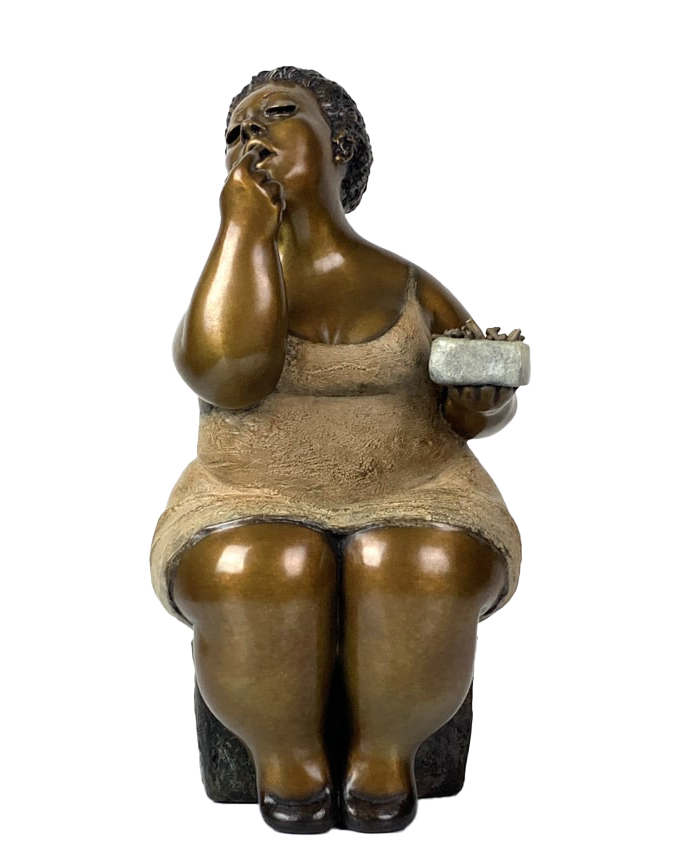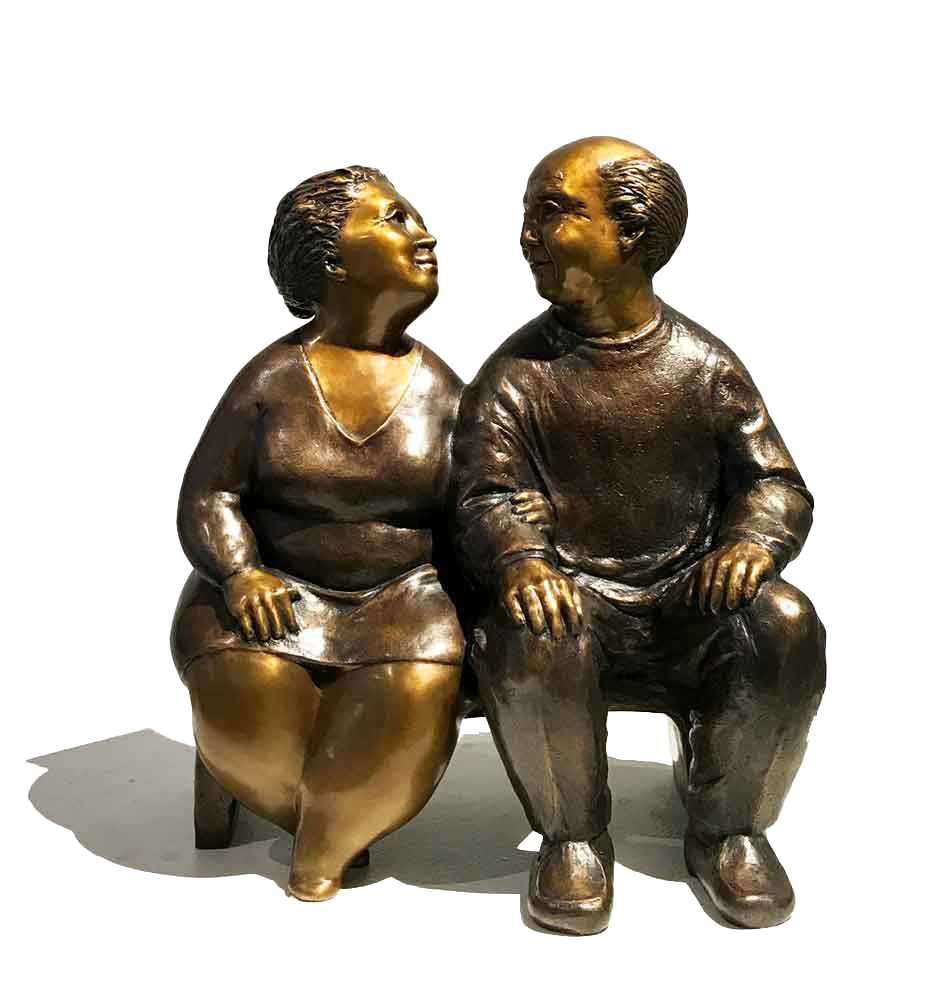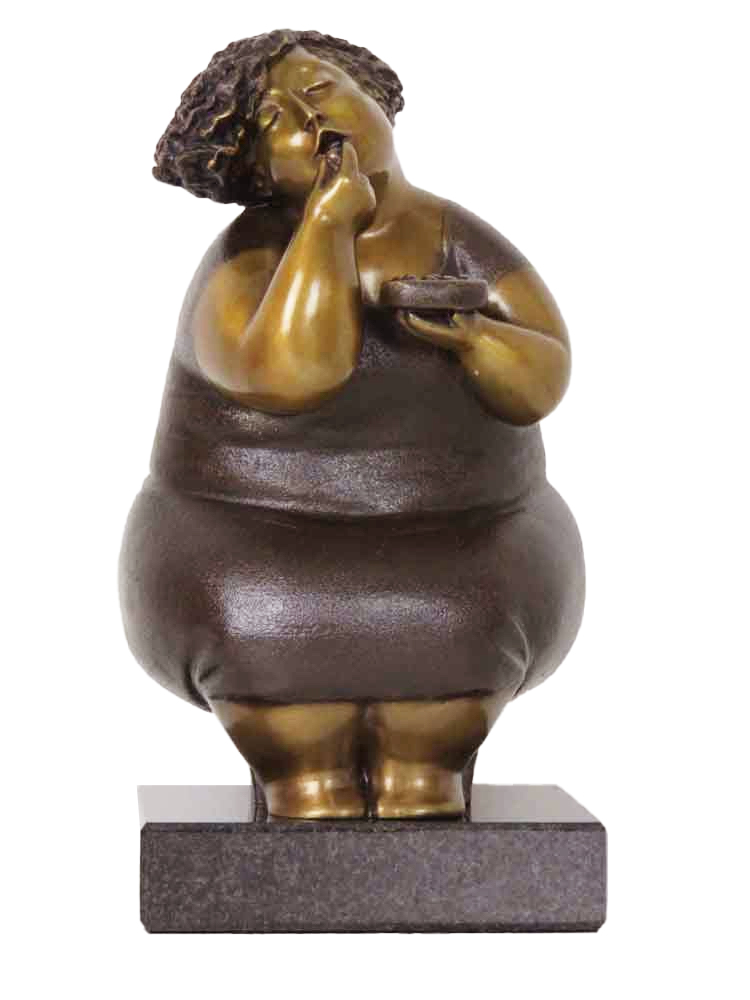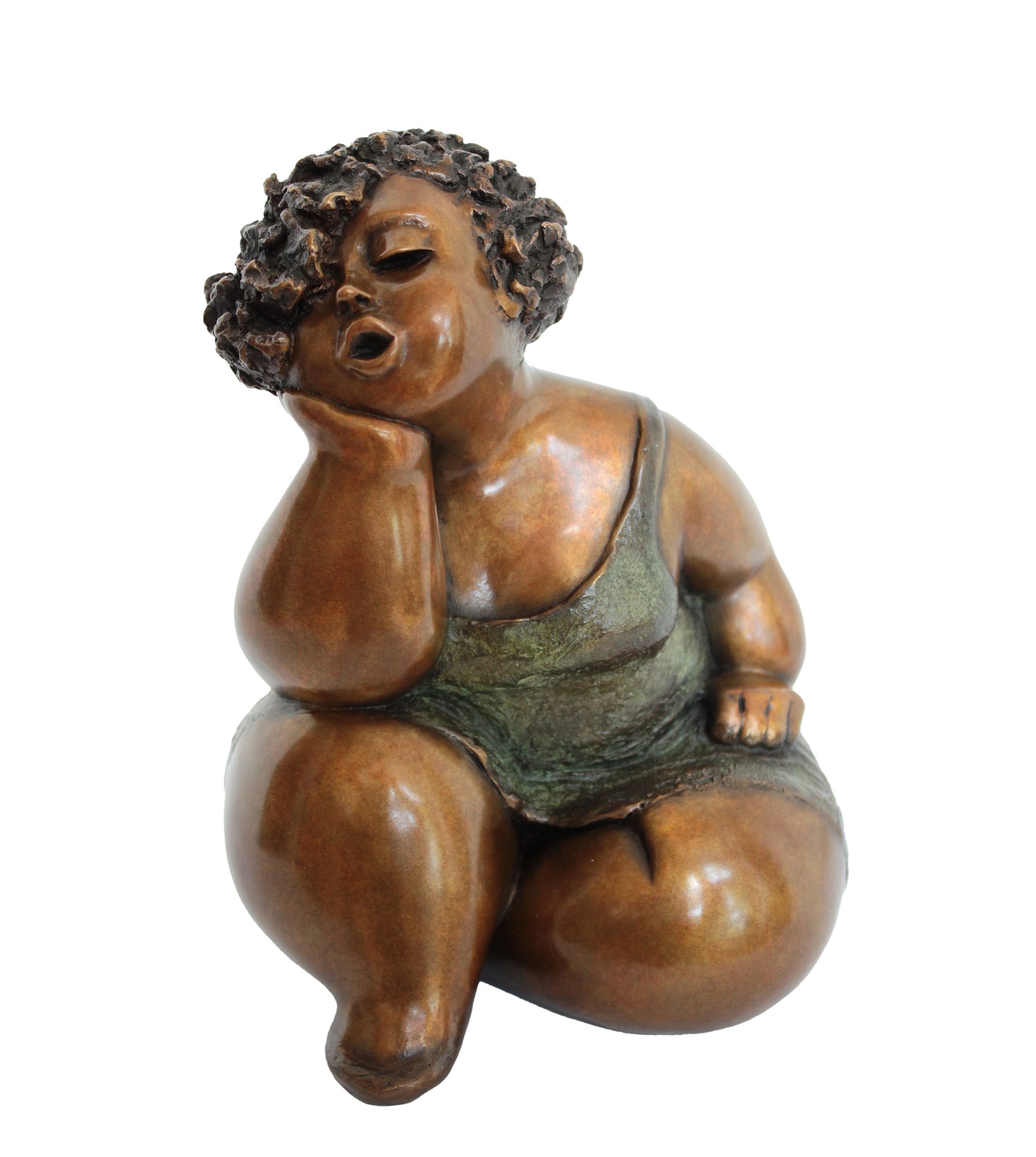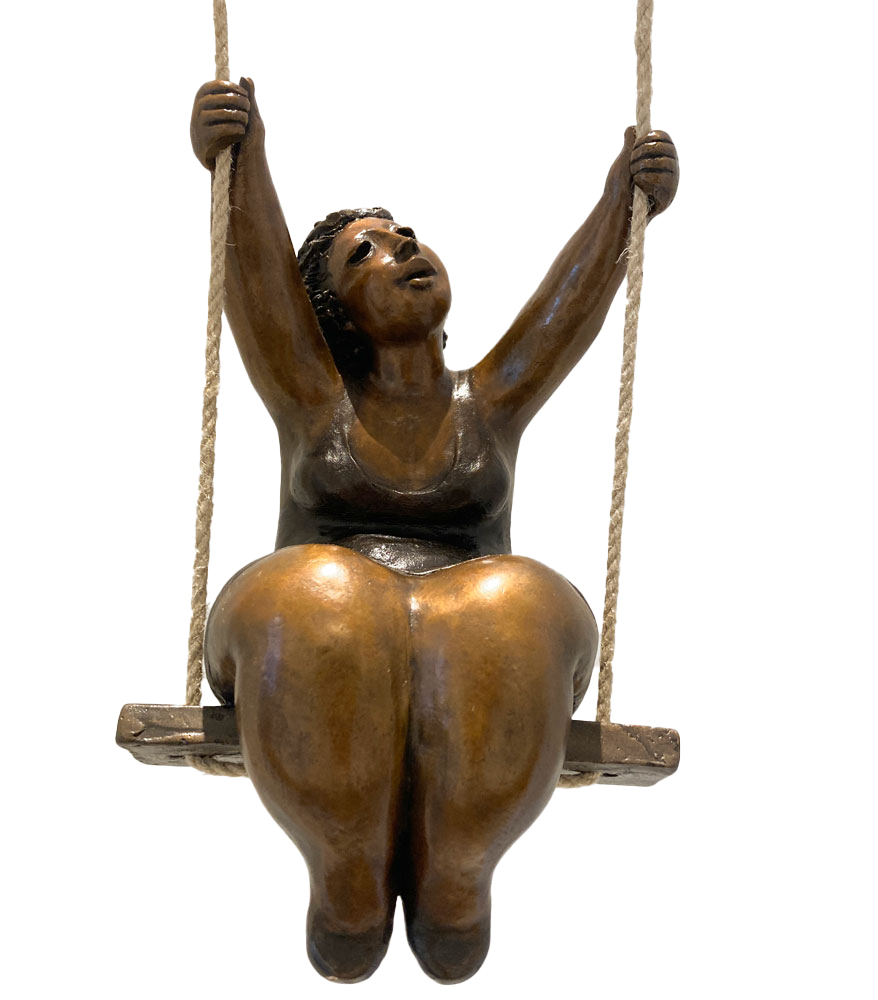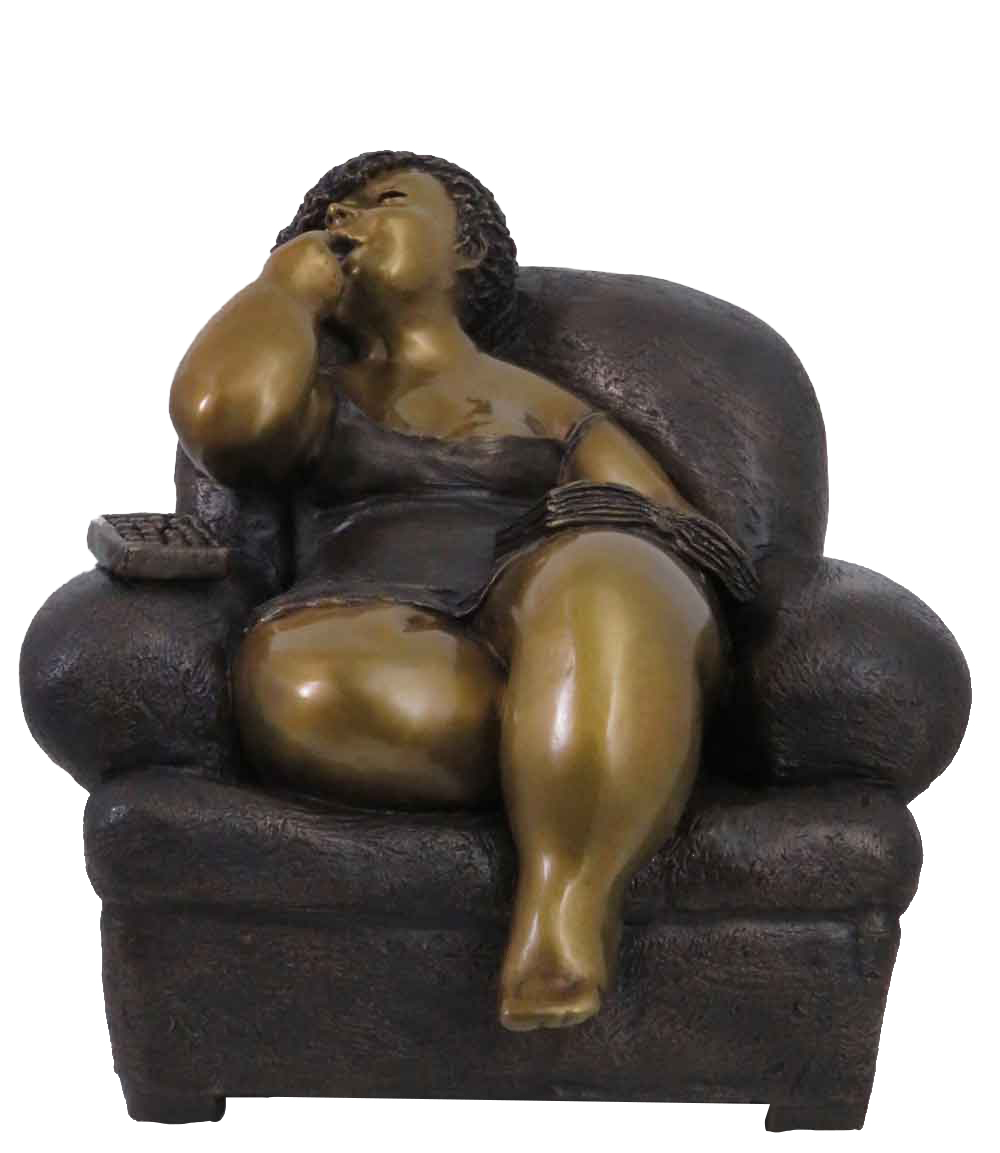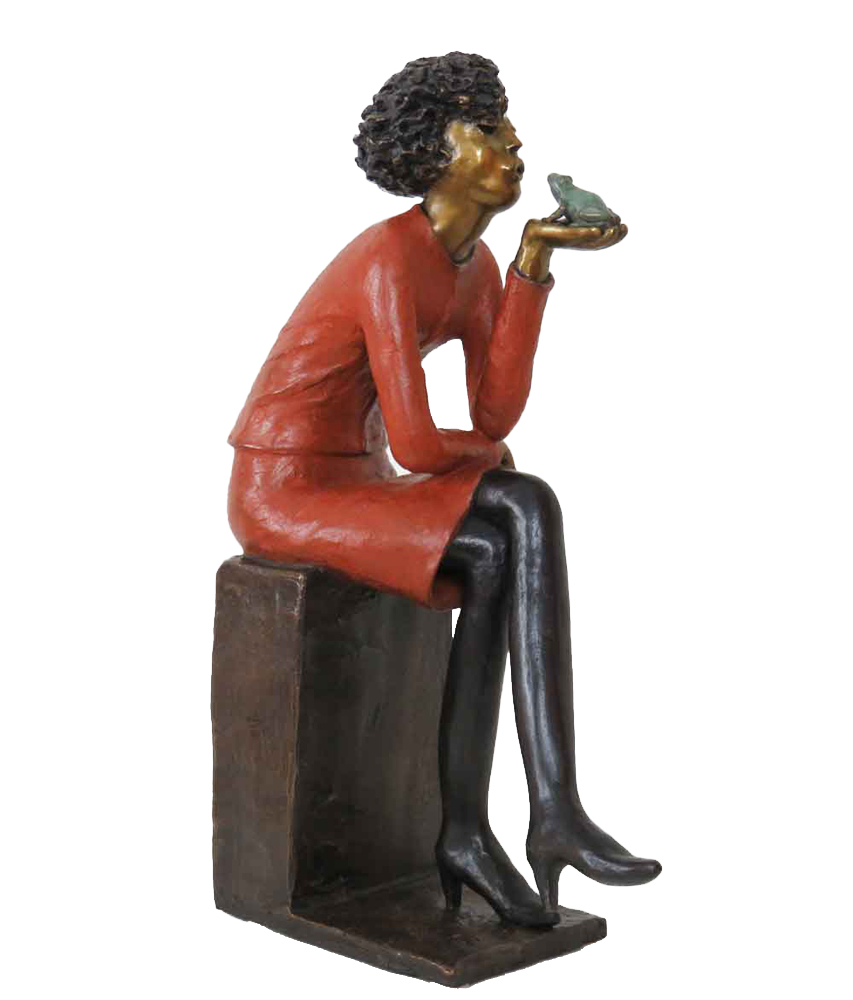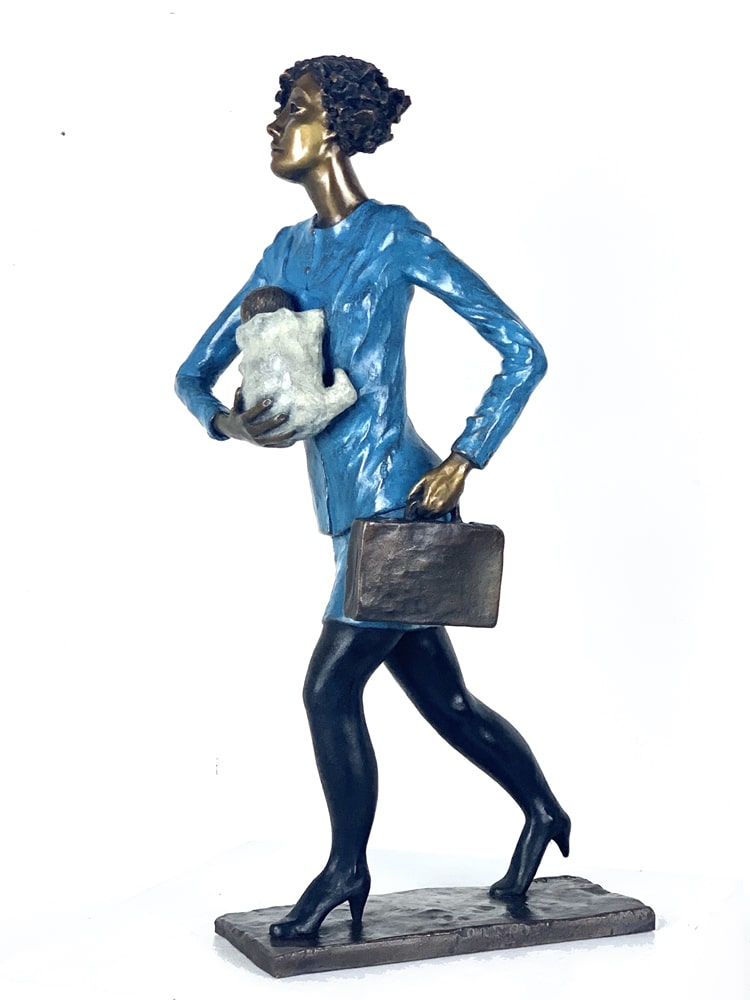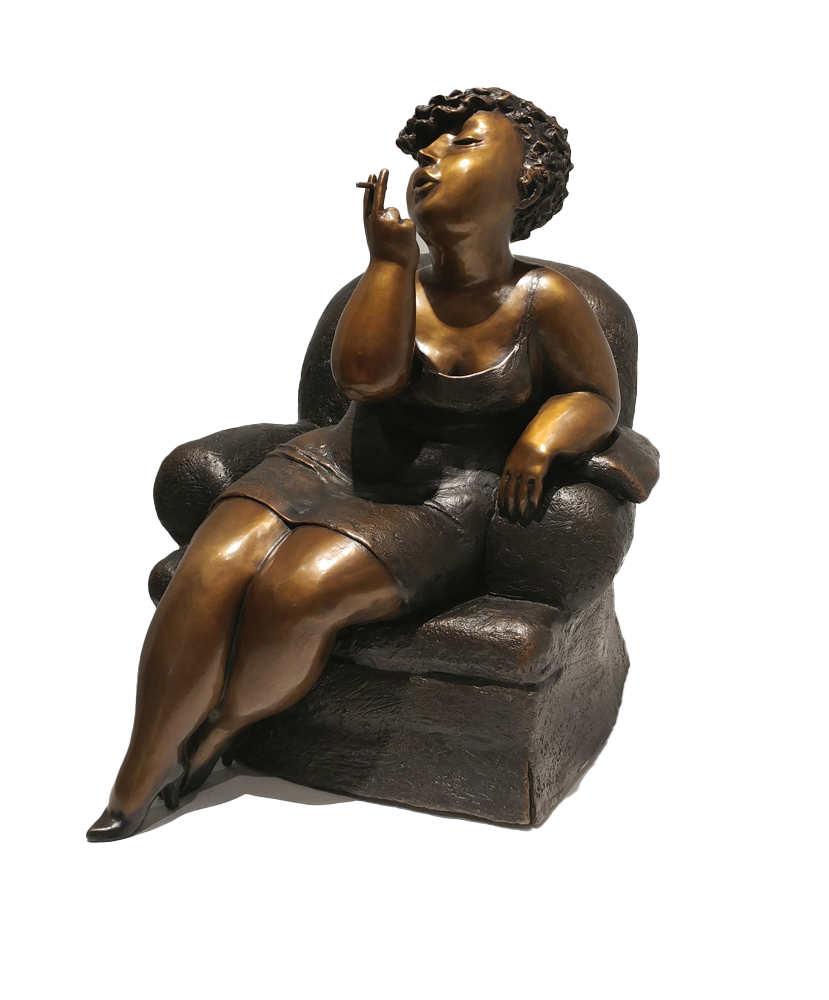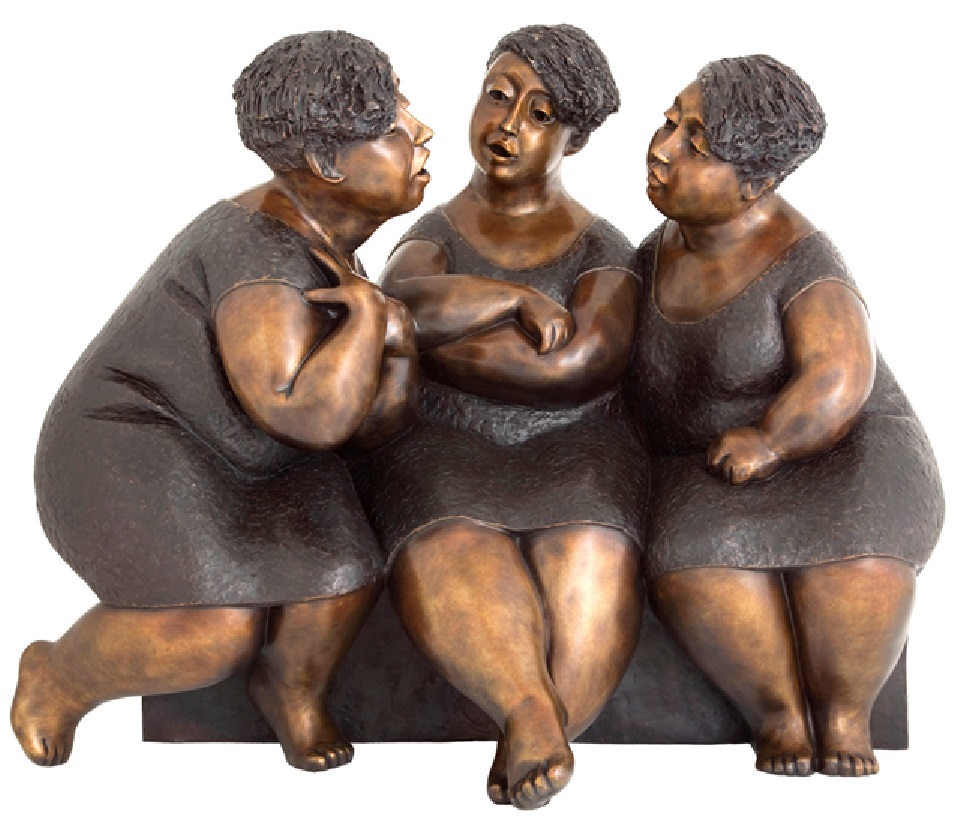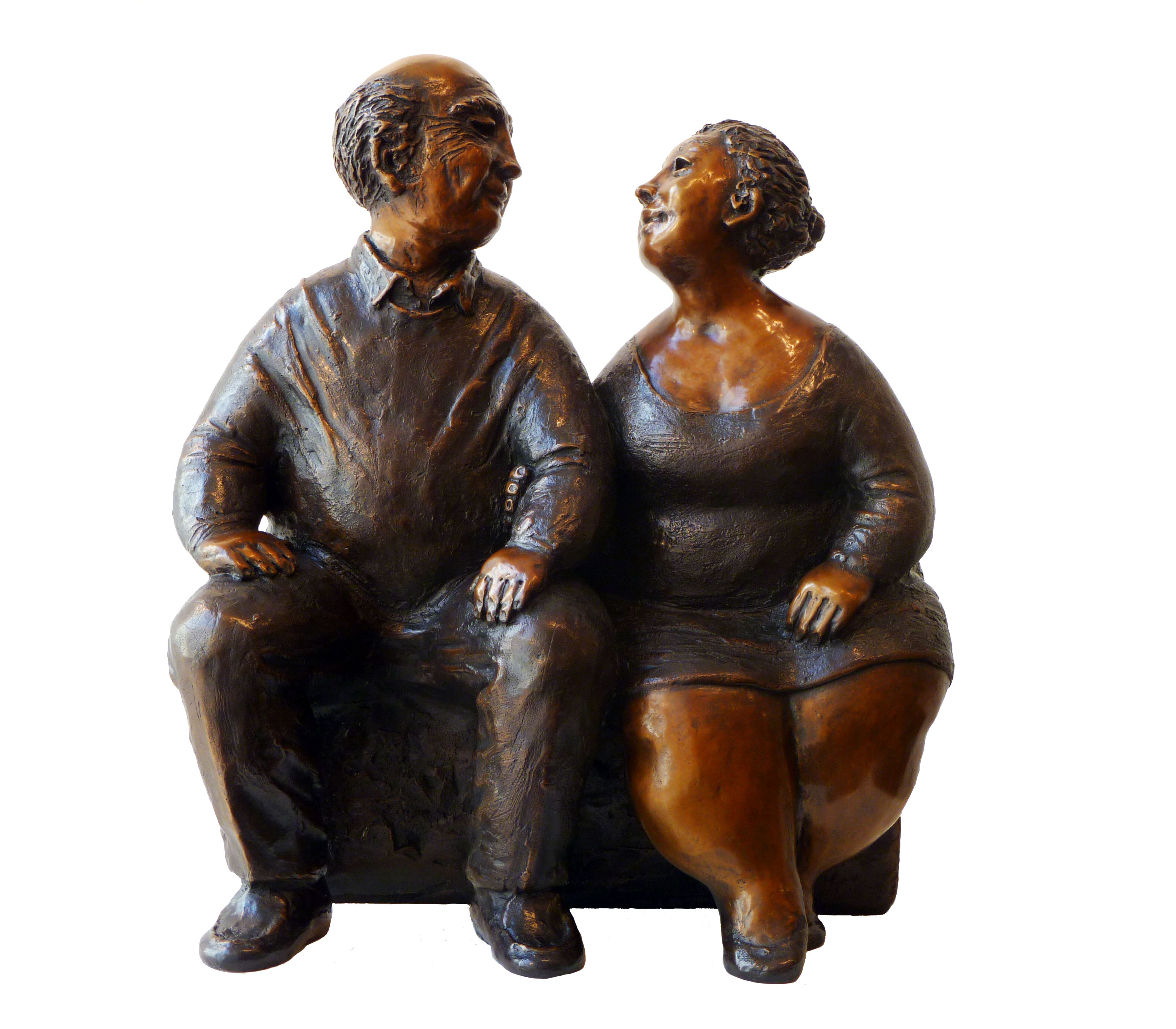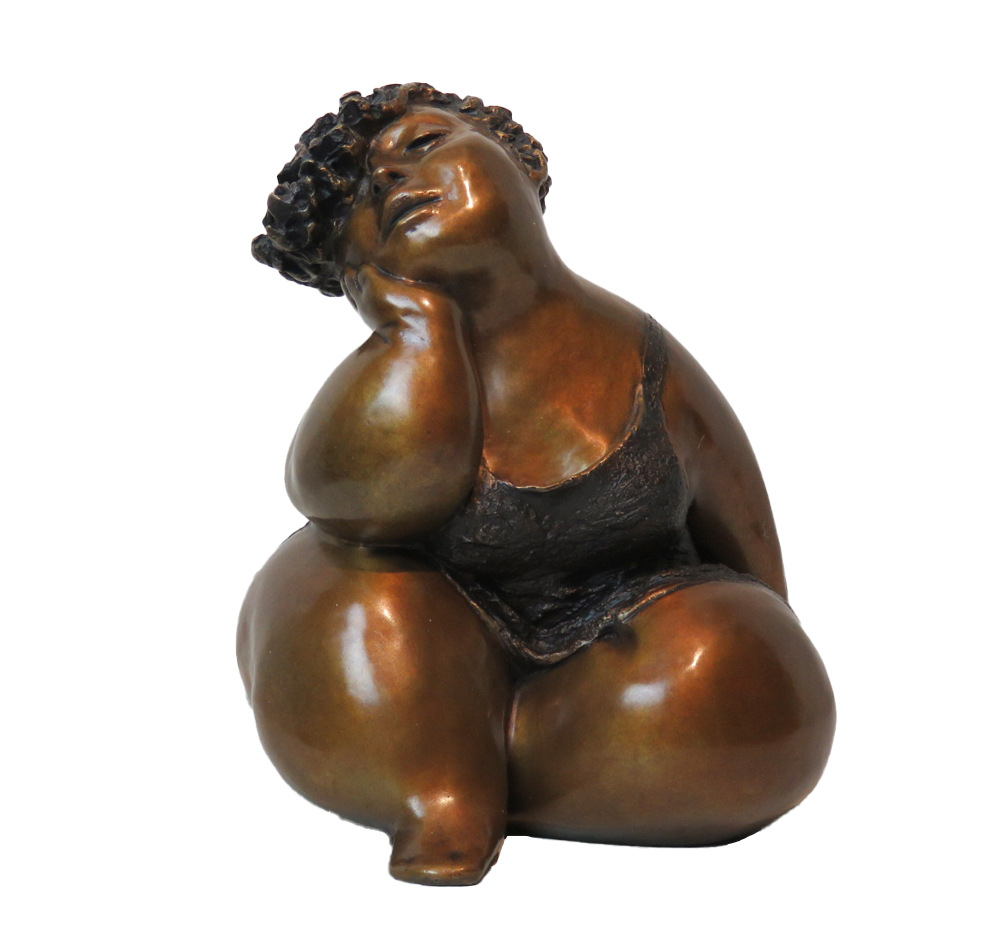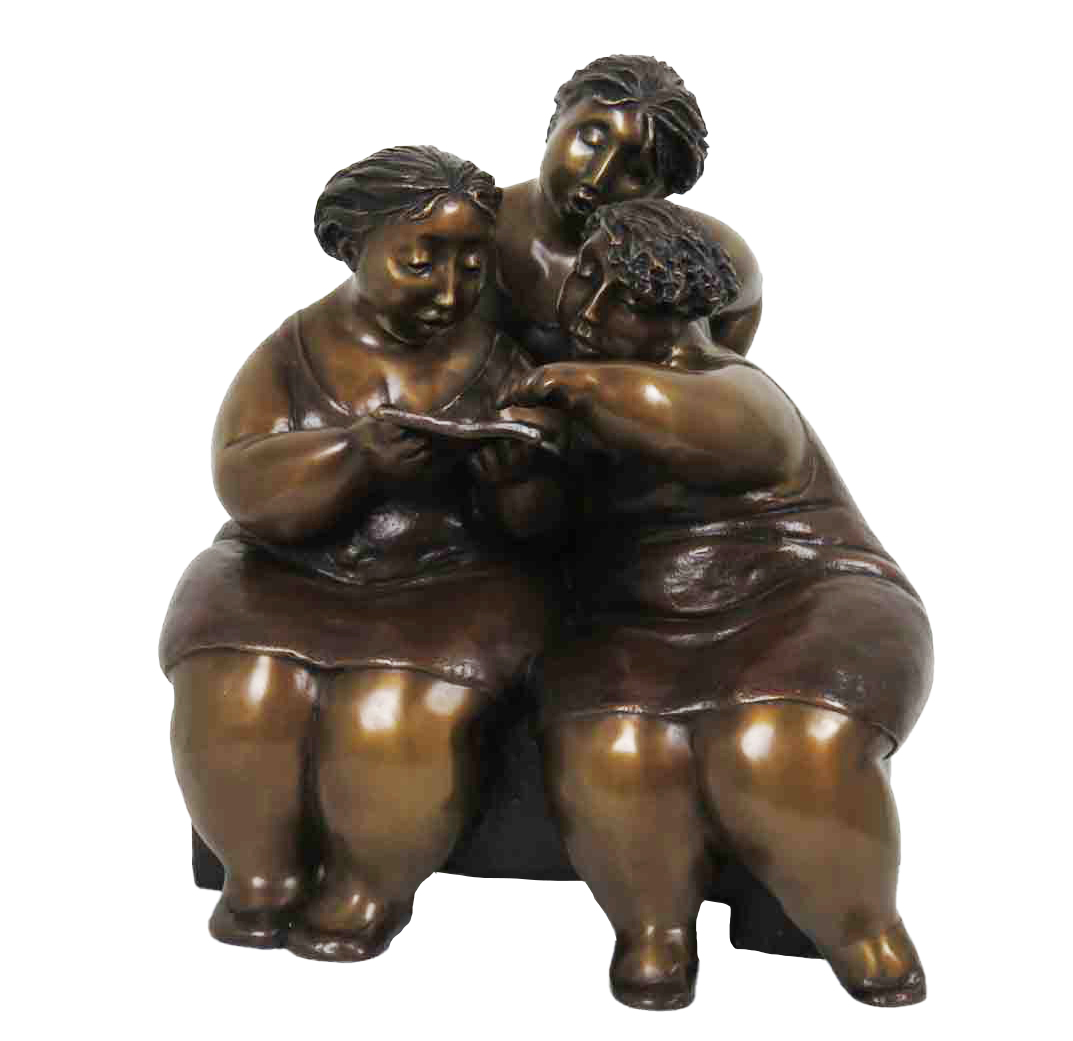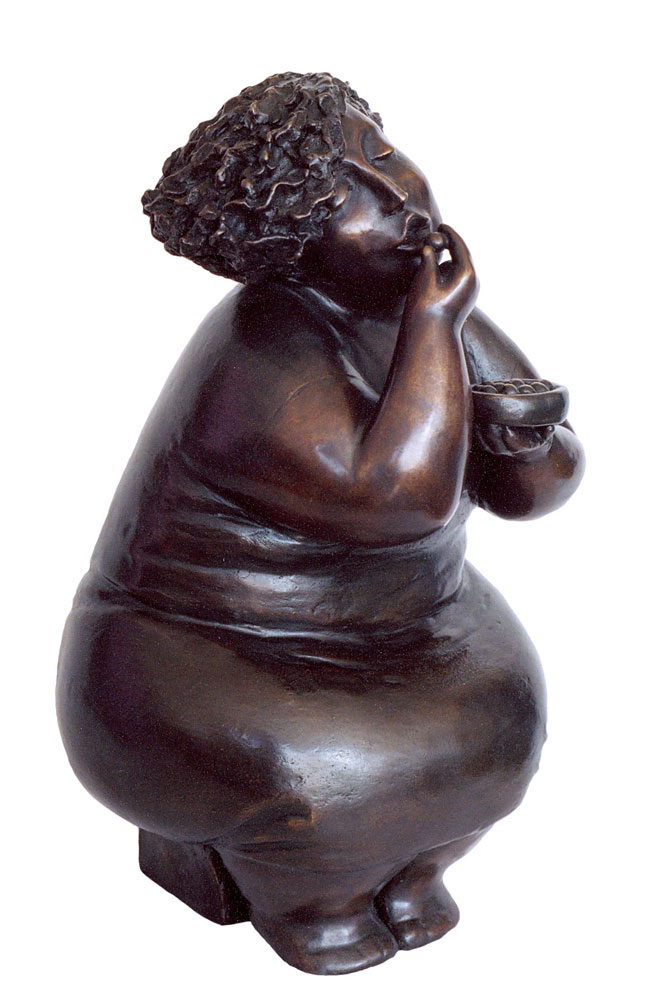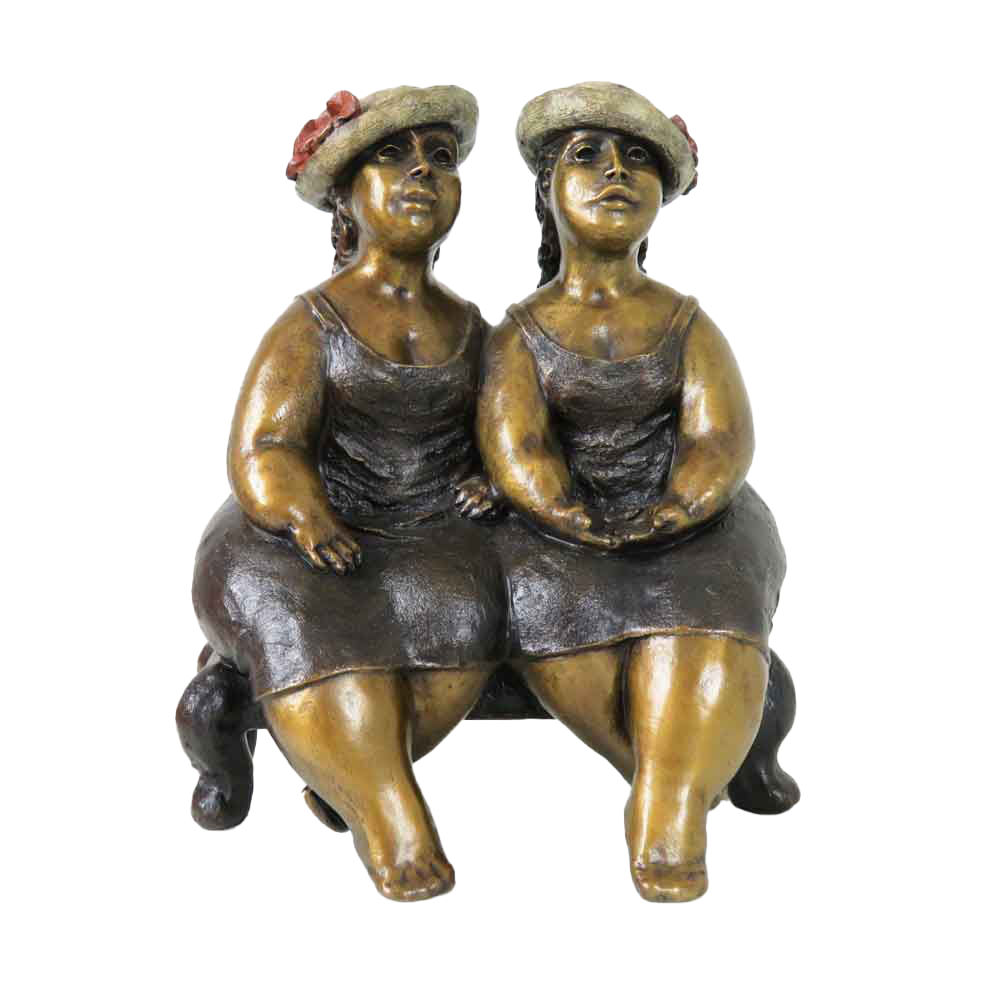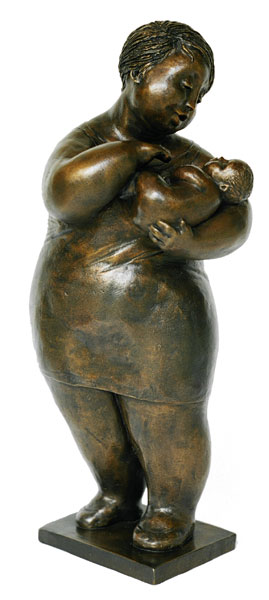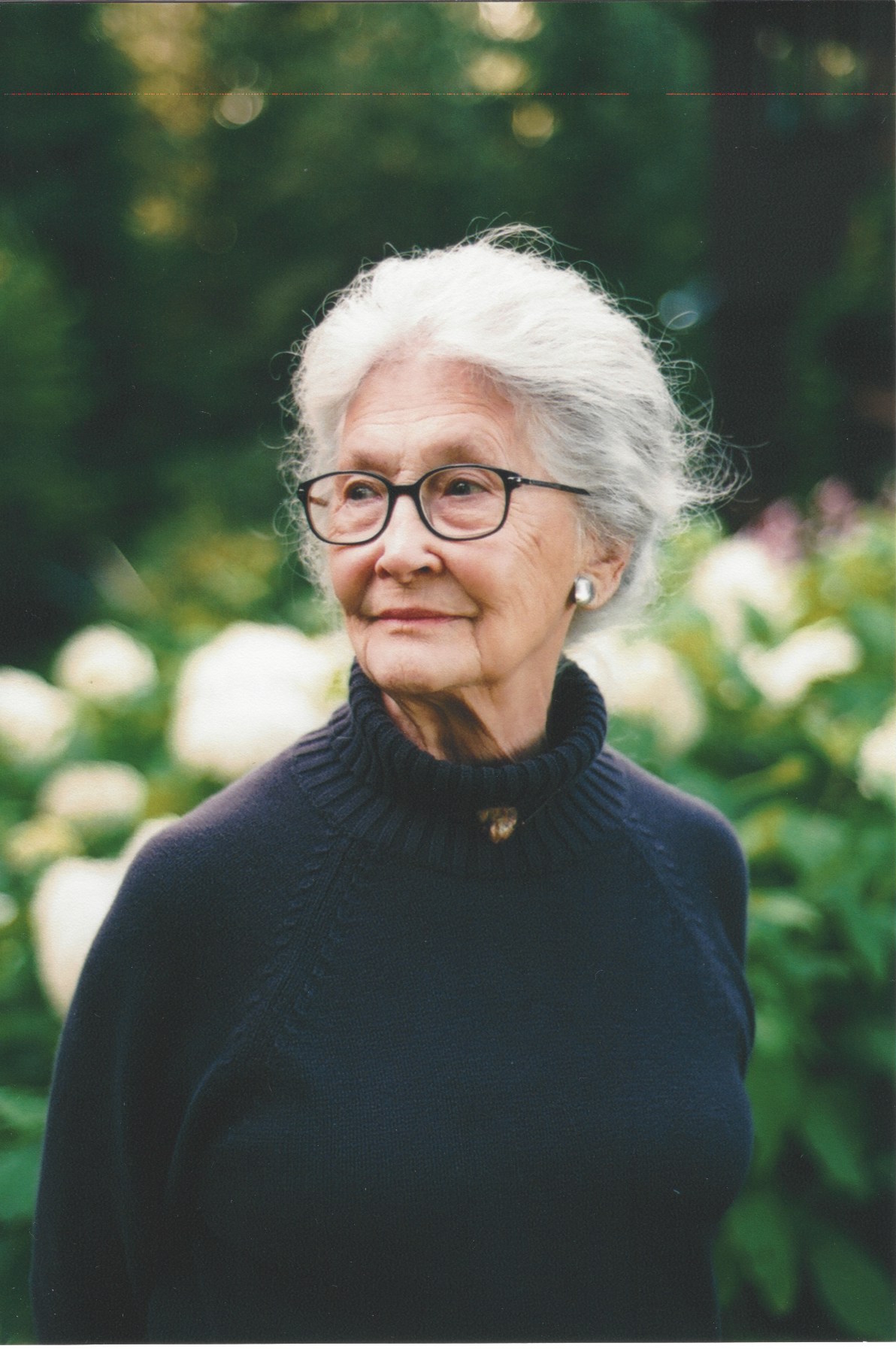artistic approach:
After 25 years of fulfilling her roles as wife and mother, Rose-Aimée was finally able to fulfill her childhood dream of becoming an artist.
To this end, she took two courses in clay modeling in 1969 and 1970 with the late Madame Claude Papineau-Couture, who at the time was working with the Northern Ontario Artists' Cooperative (CANO). She also set up a small studio in the basement of her home.
Success was not long in coming, and within the first year she made her first sale to a private collector in Sudbury. During the '70s, she made several sales there, but soon realized that she couldn't keep up the momentum without outside help. She therefore decided to take advantage of her husband's regular trips to southern Ontario to contact various art galleries.
In the early '80s, after a dozen years of intense artistic creation, Rose-Aimée felt the need to explore new avenues. In fact, for the first twelve years, Rose-Aimée worked mainly on her forms, mounting her sculptures with colombins, and using as raw material stoneware with 25% grog, which she fired at high temperature to vitrify it.
In the early years, since stoneware lent itself well to her sculptural style, Rose-Aimée felt no need to question this choice. In fact, her early sculptures were mainly of figures, both male and female, from their everyday life. So, for example, the figures were tree planters, mine workers, village women and so on.
Over time, however, the sculptural form became an increasingly important part of her creative process. As she says herself:
"I want to exploit all the facets of volume. Over time, my figures must become more and more graceful and sensual, while at the same time becoming more and more imposing. In fact, I'm looking for the balance between fragility and curves.”
In pursuit of the ideal she had set herself, she decided to take a clay modelling workshop in 1981 at the Junior School of the Arts for Northern Ontario (JSANO) in Kirkland Lake with Diane Mooney, then, in 1982, a drawing workshop with live models at the Canadore College Summer School of the Arts in North Bay.
She also had the intuition to combine the texture of stoneware with the luminosity of bronze. A wise decision, since with this change Rose-Aimée's creative output literally exploded, with the advent of a whole series of prestigious works.



